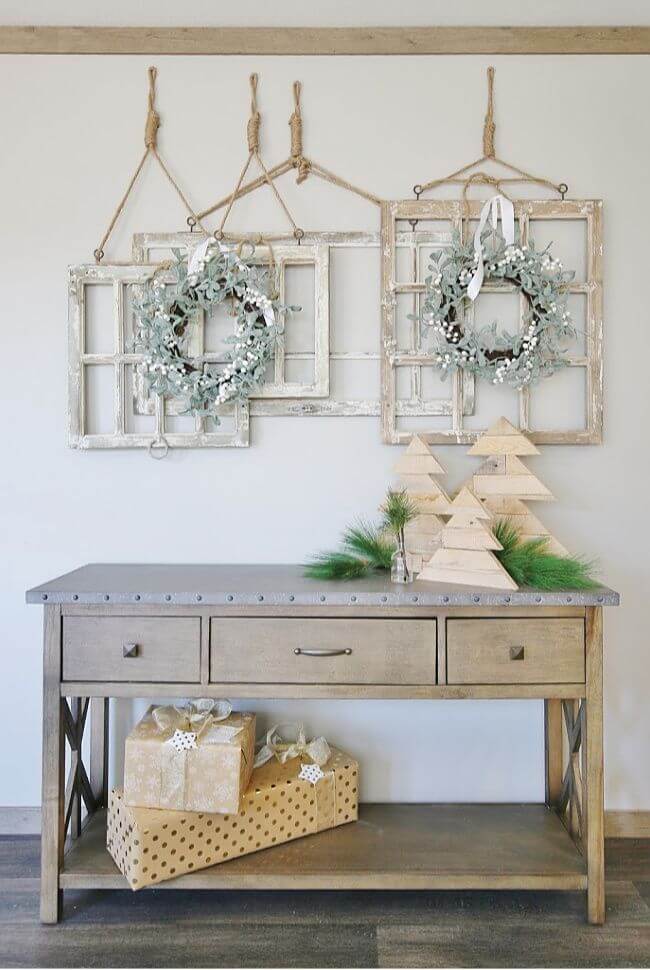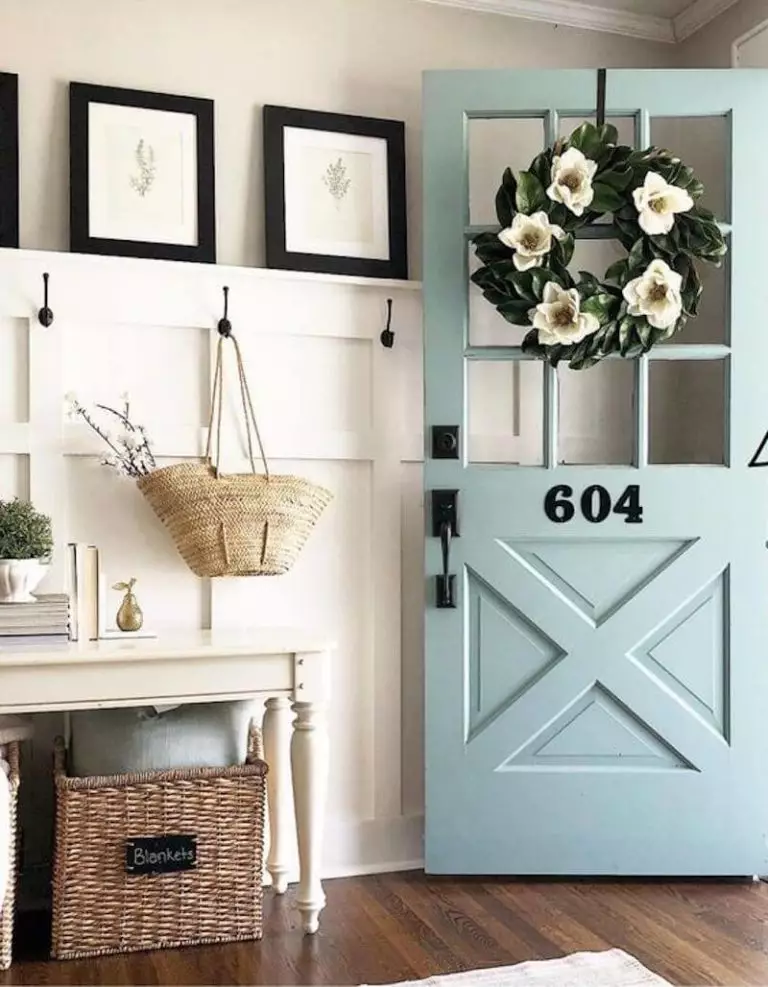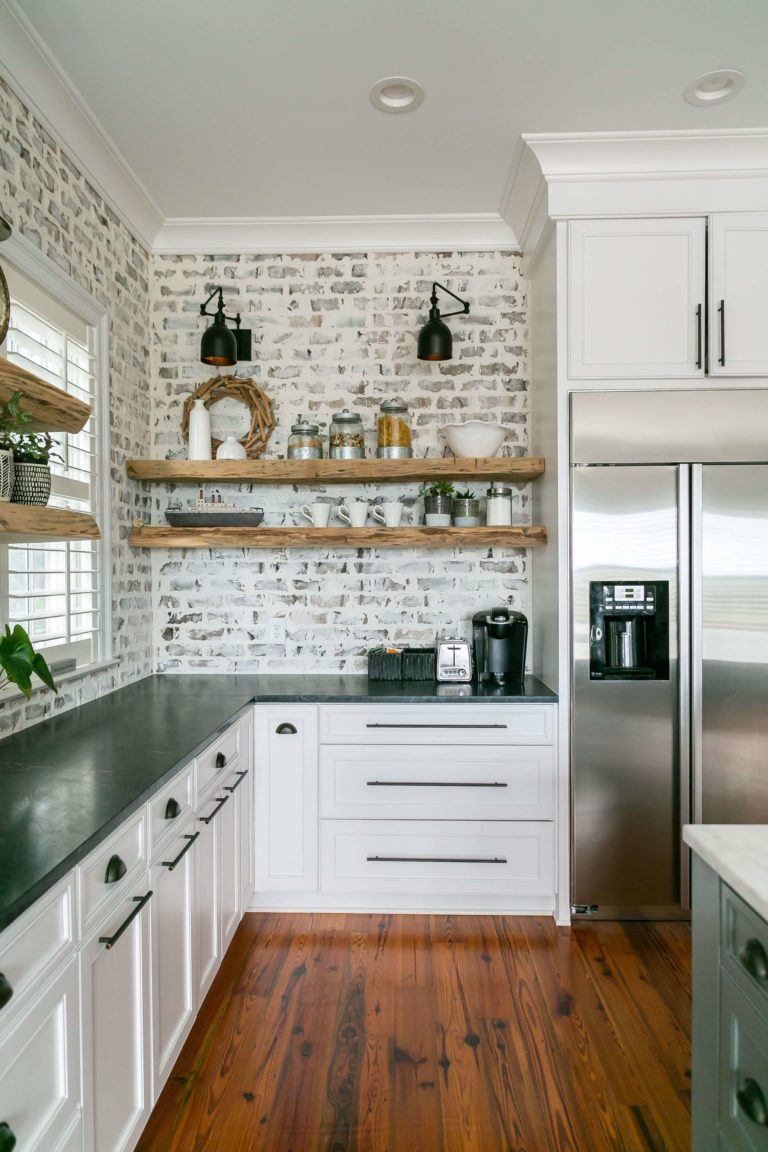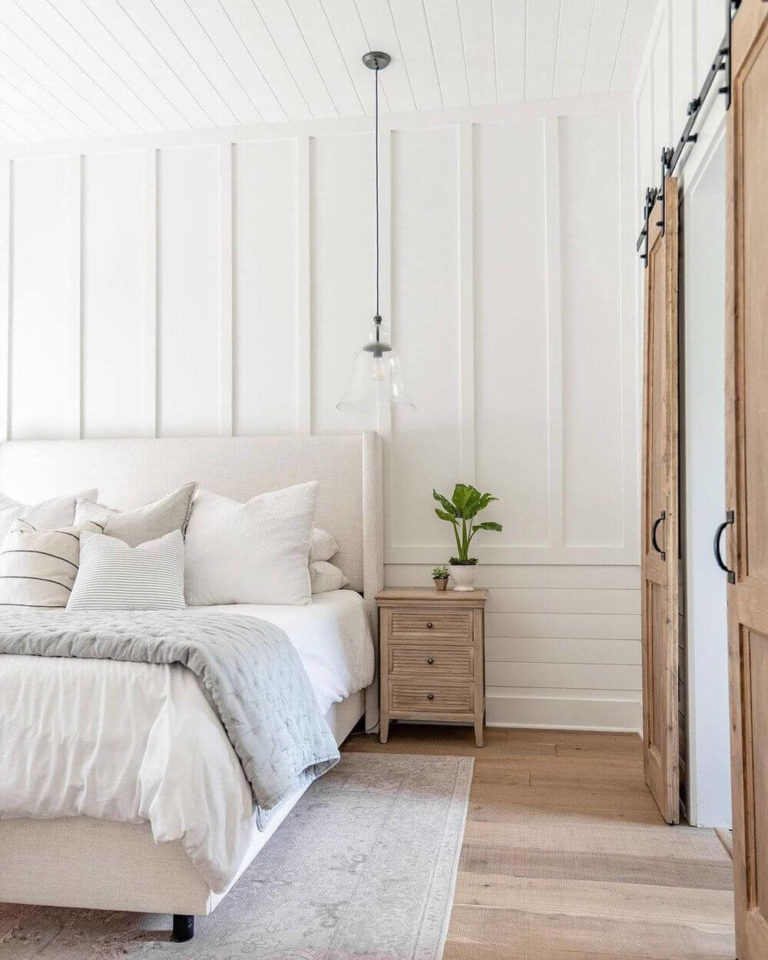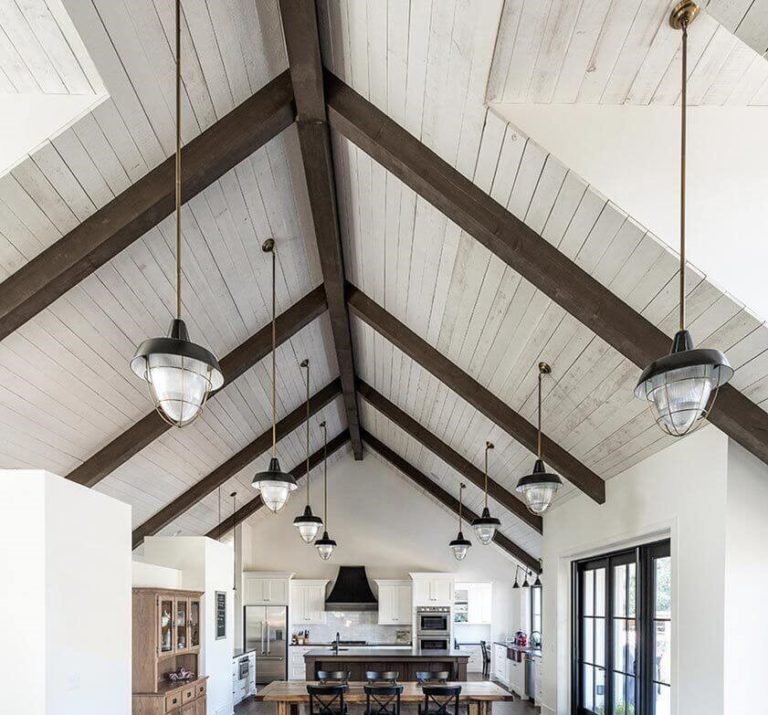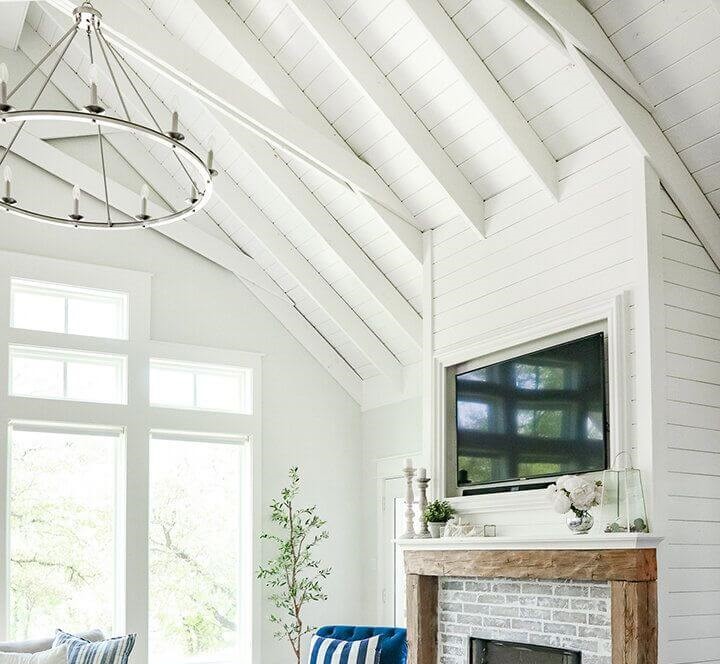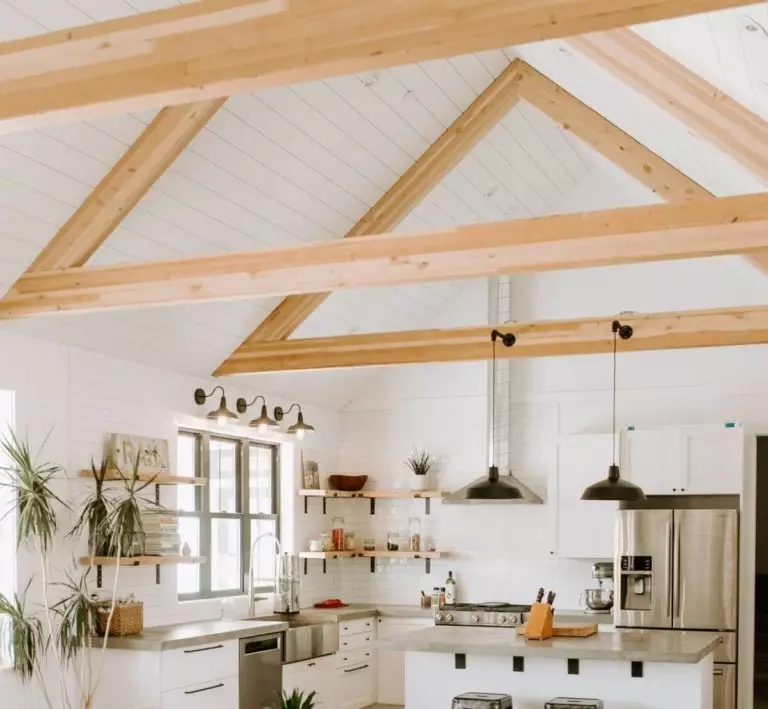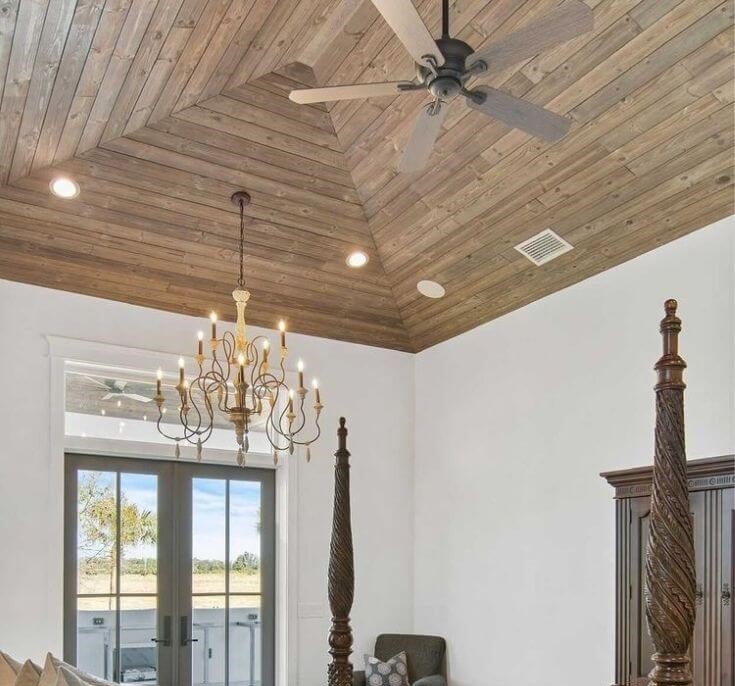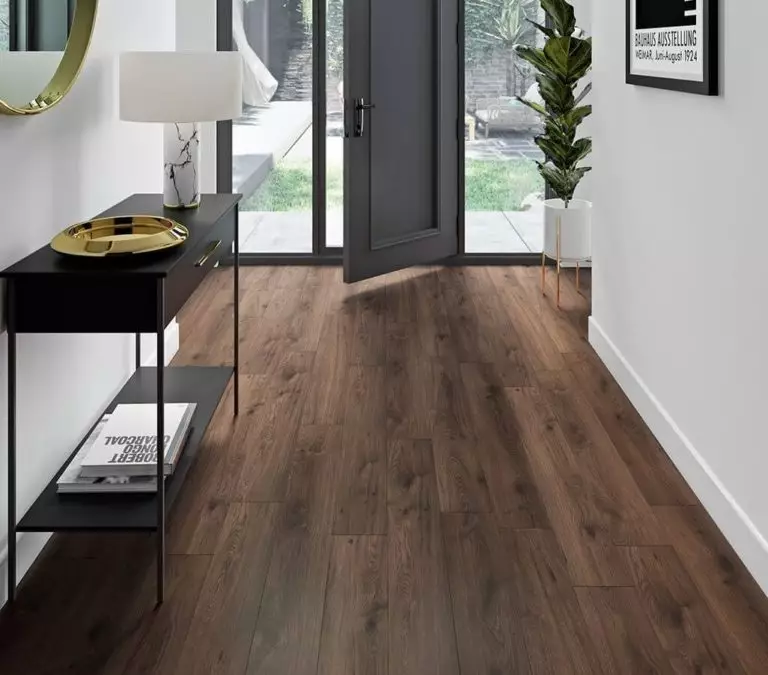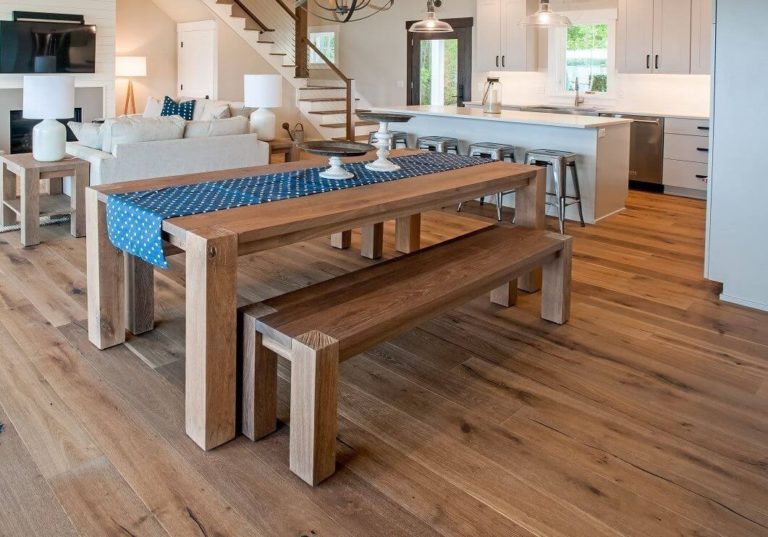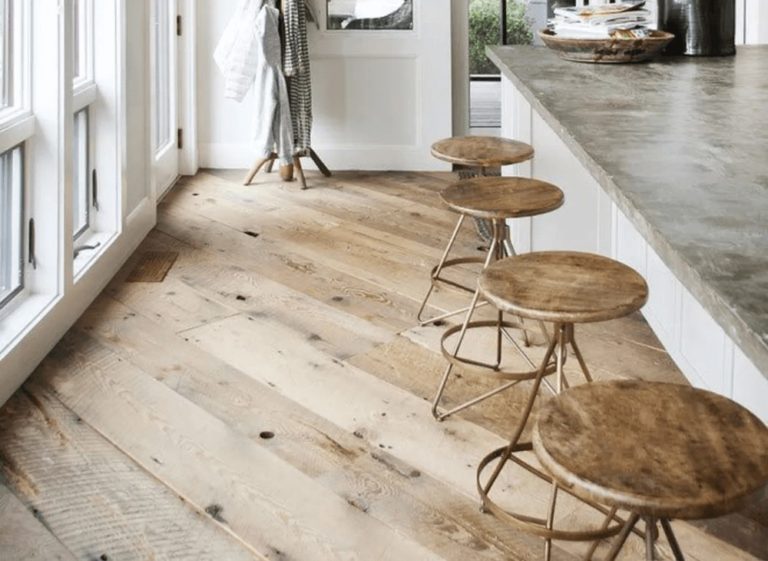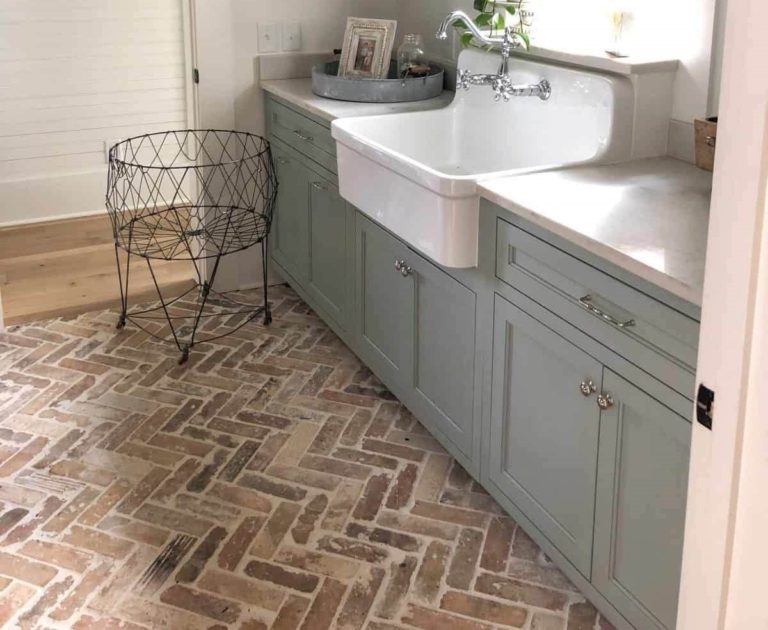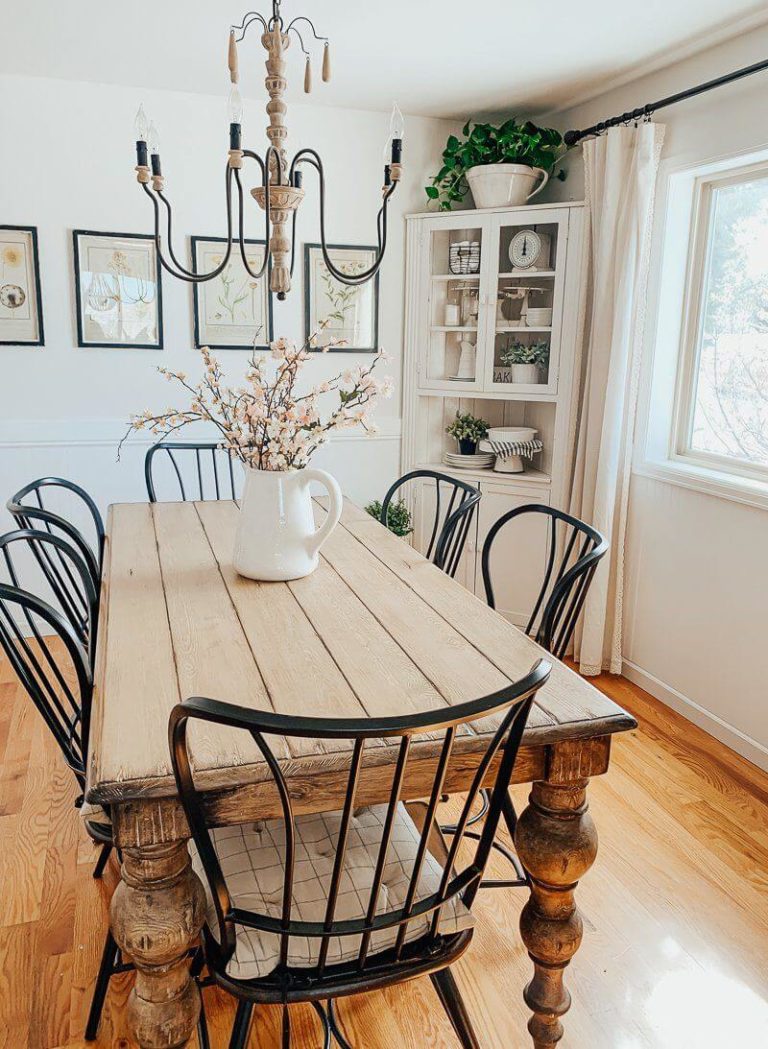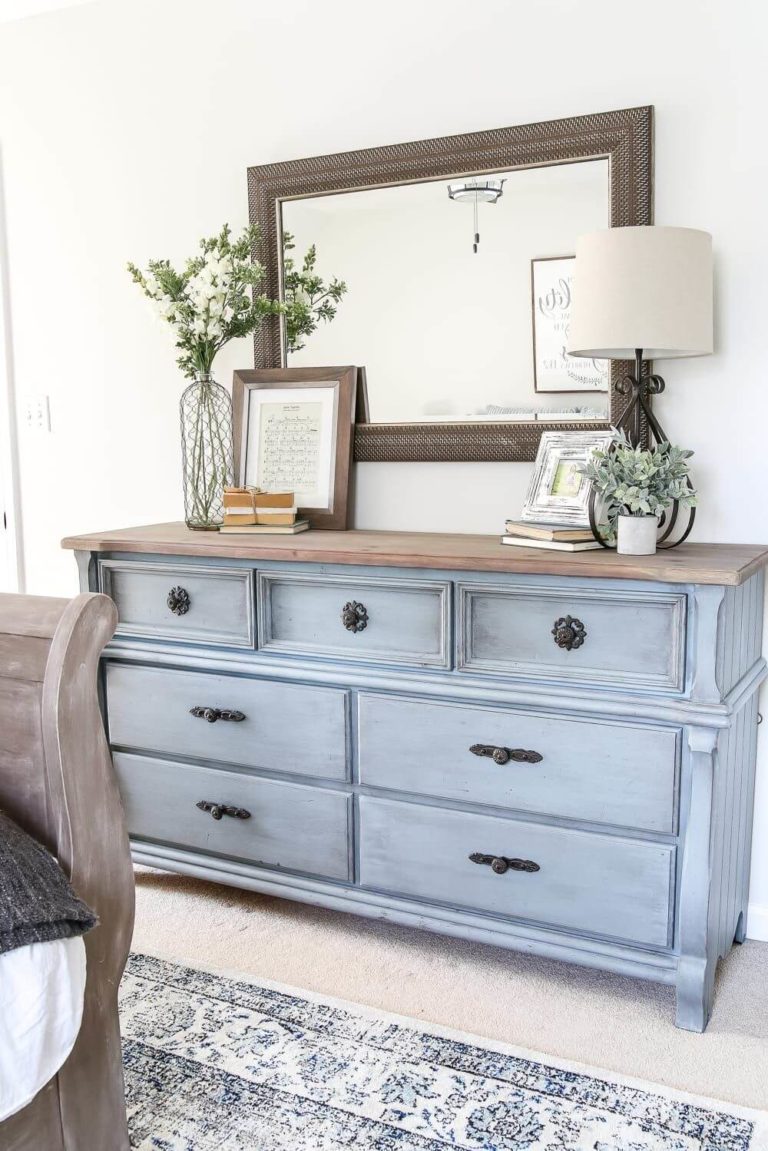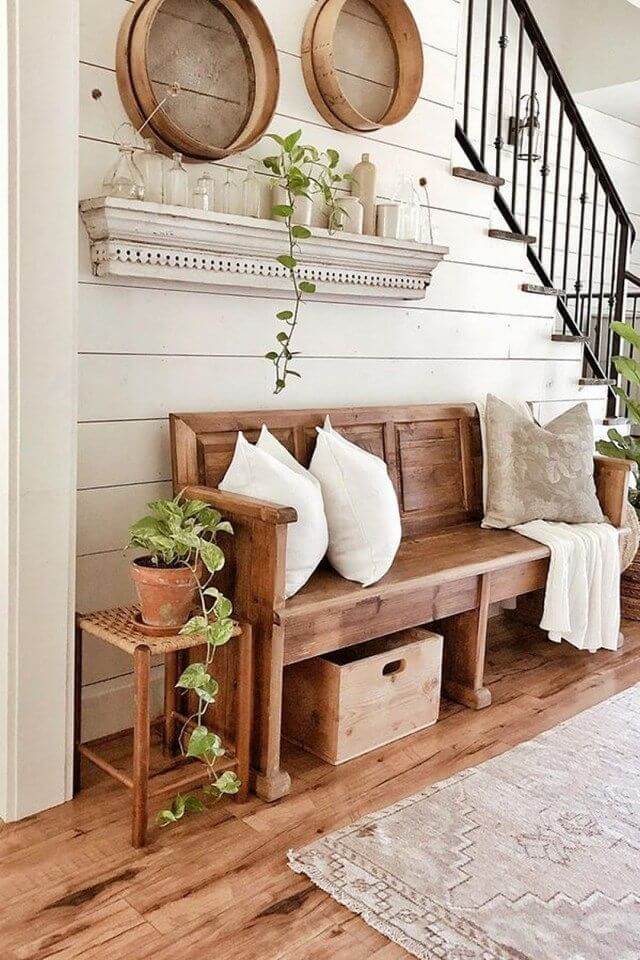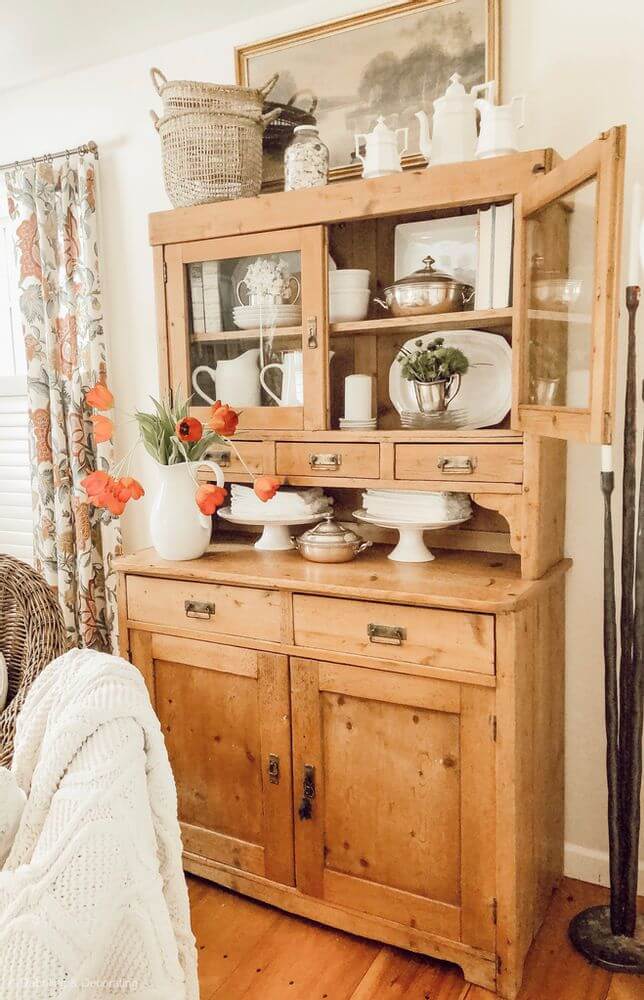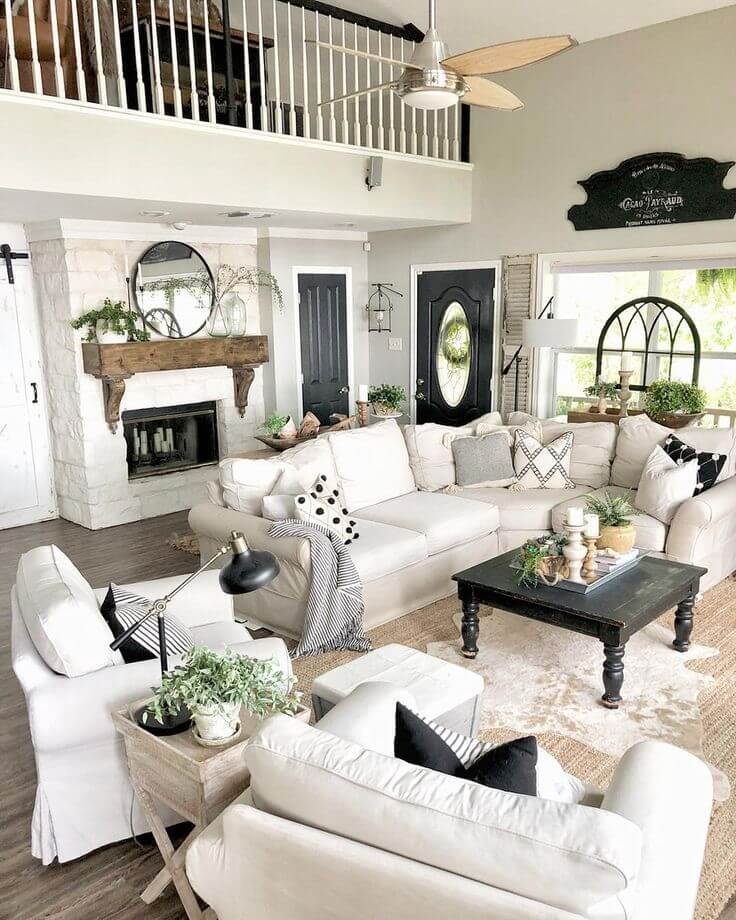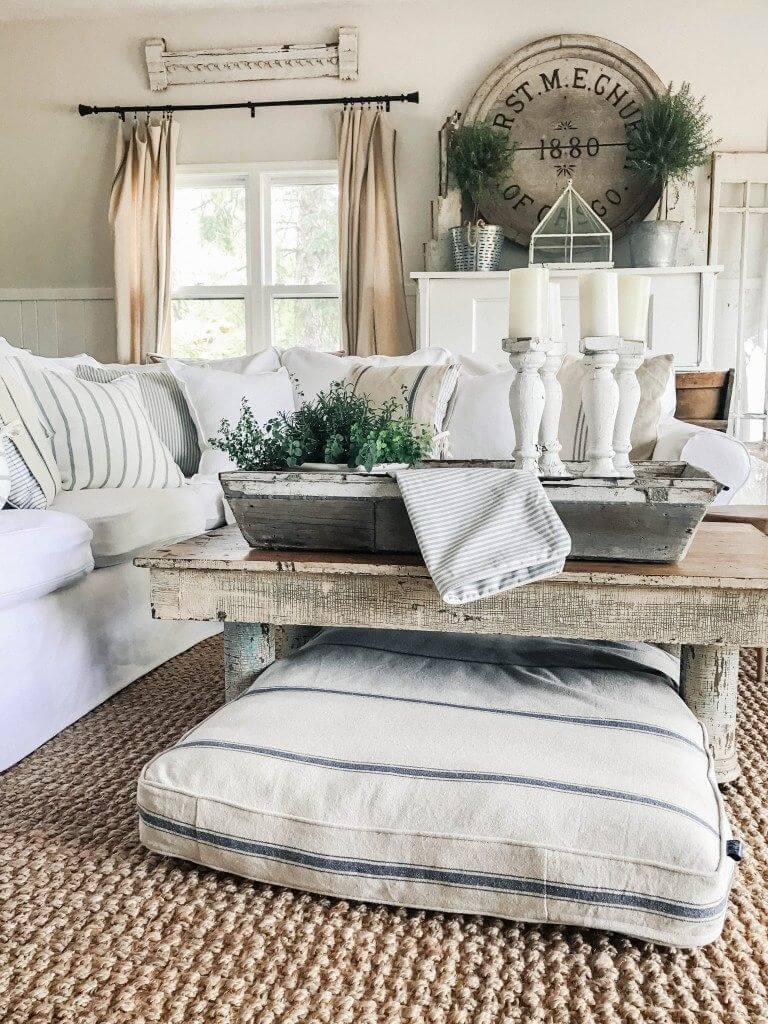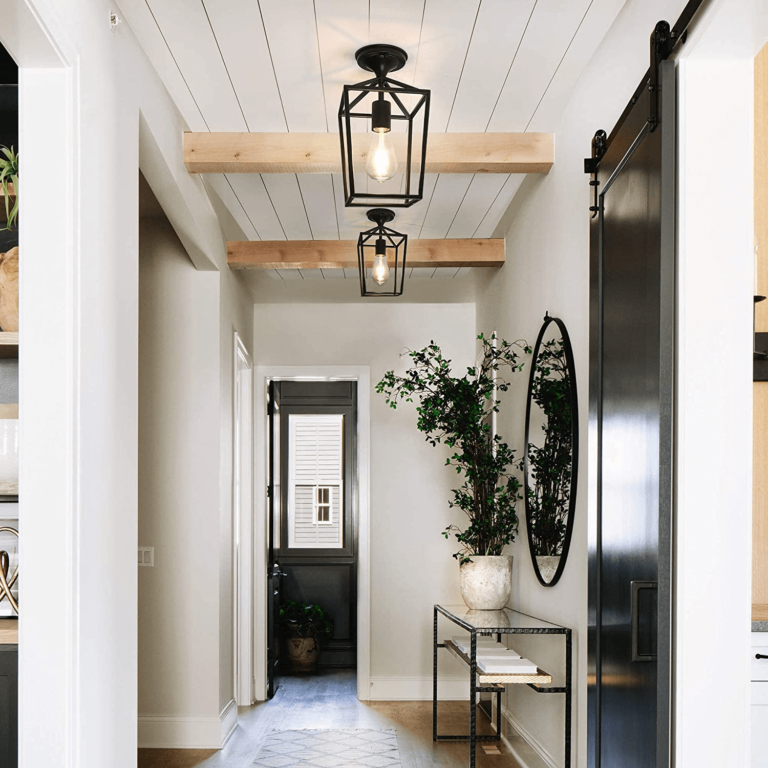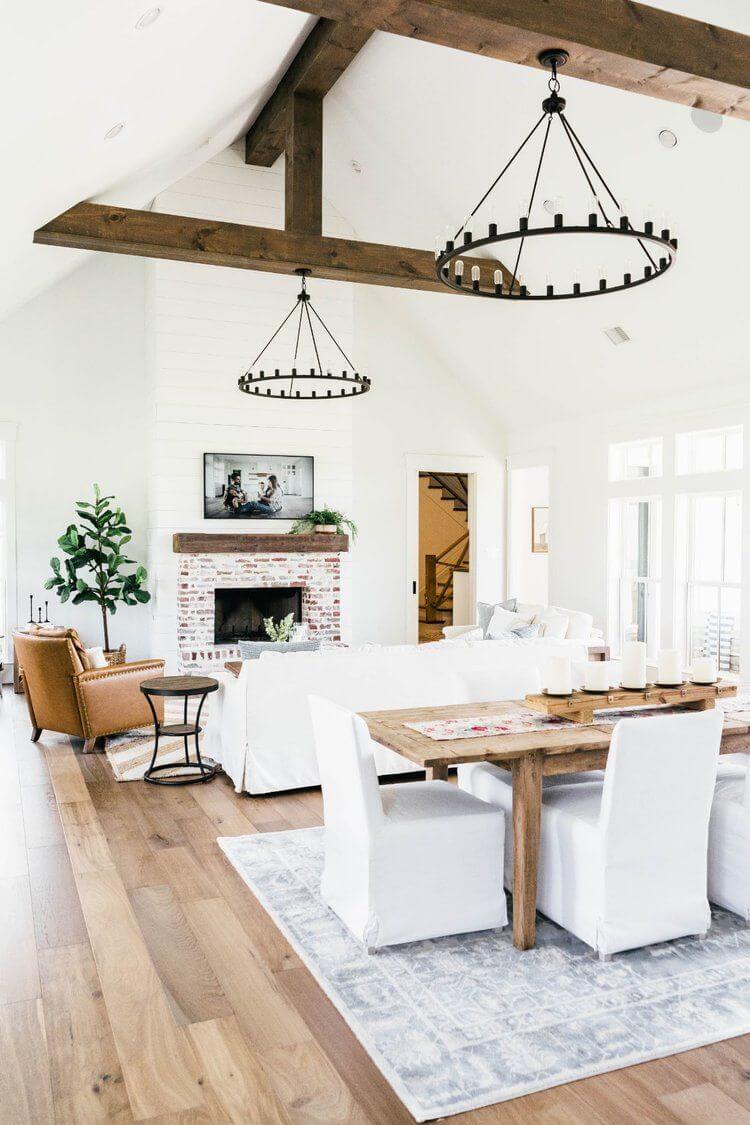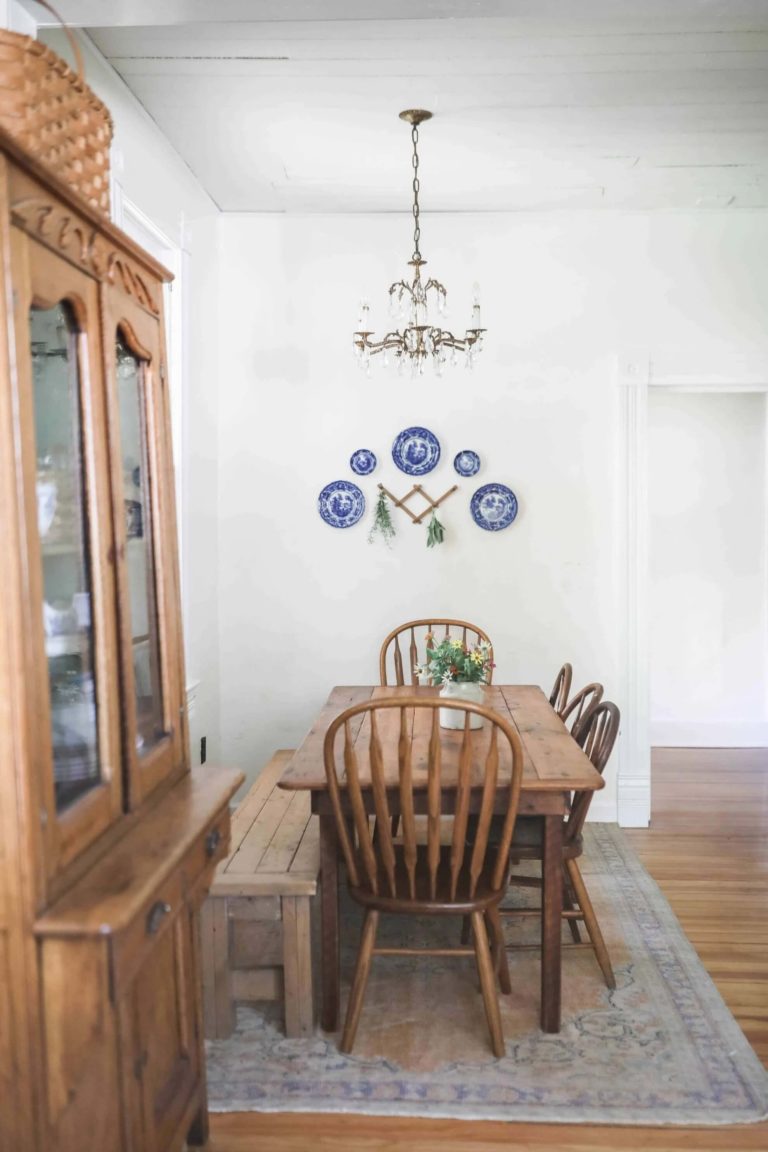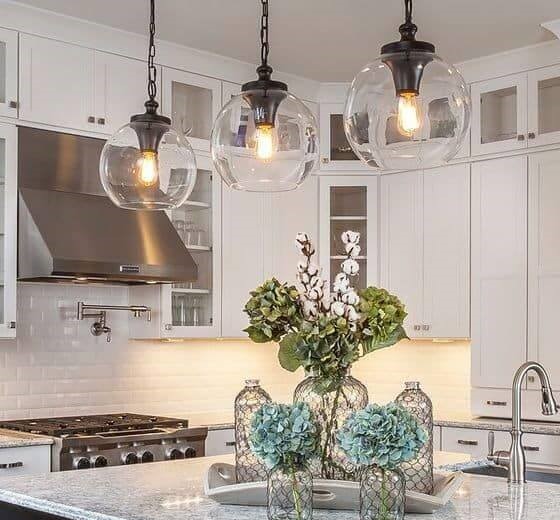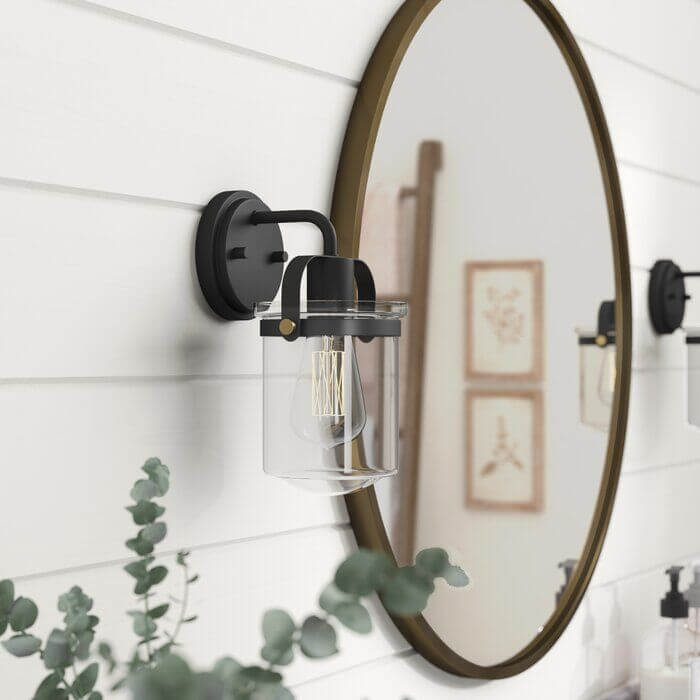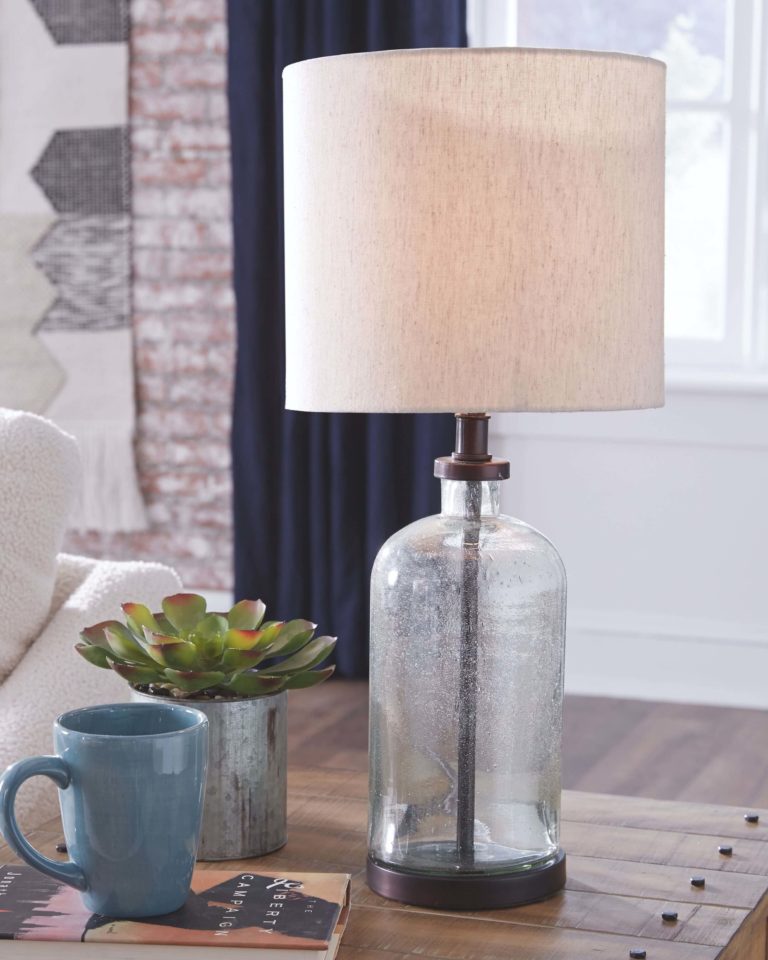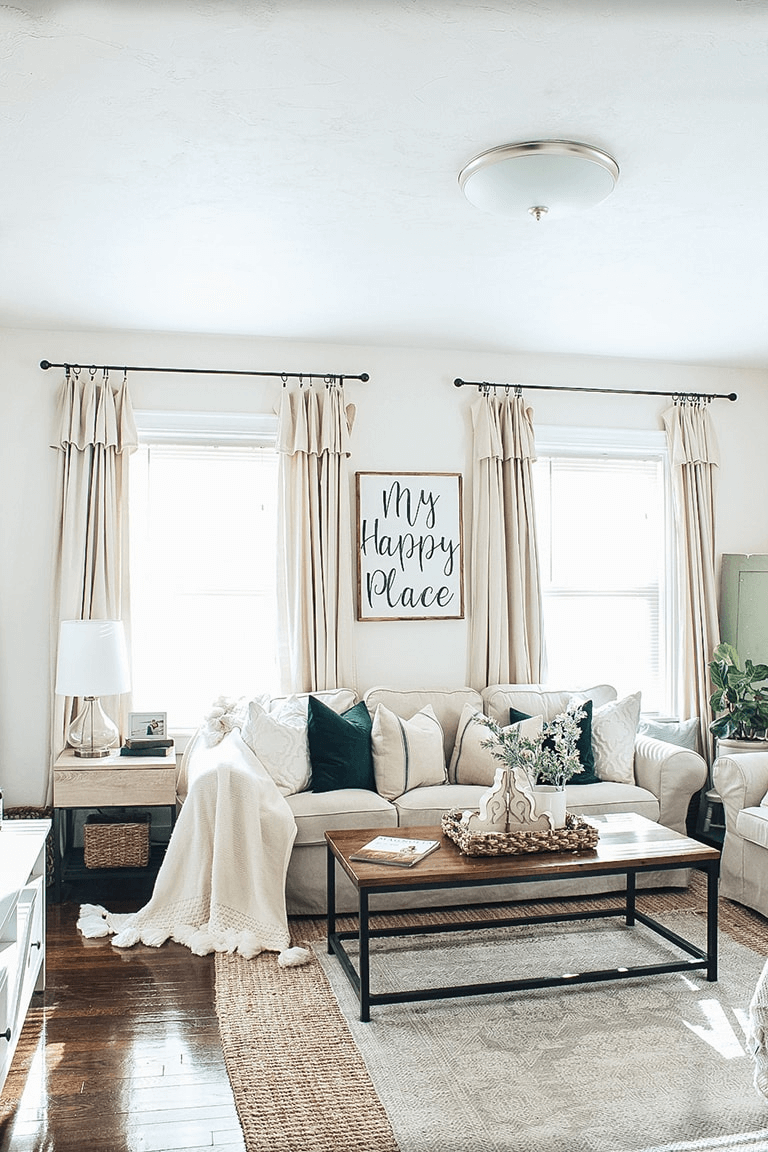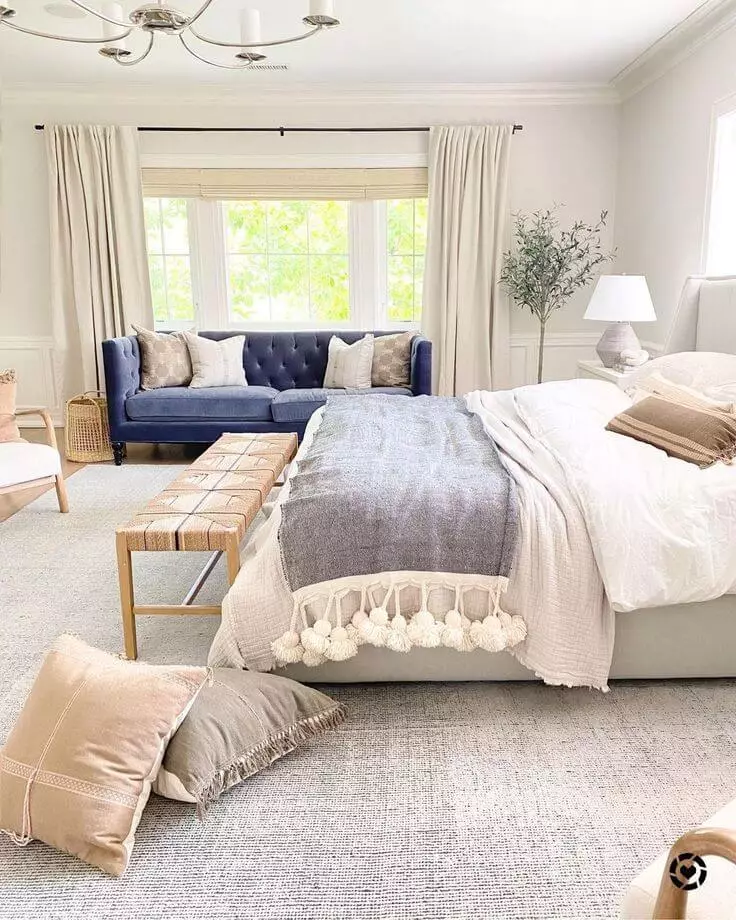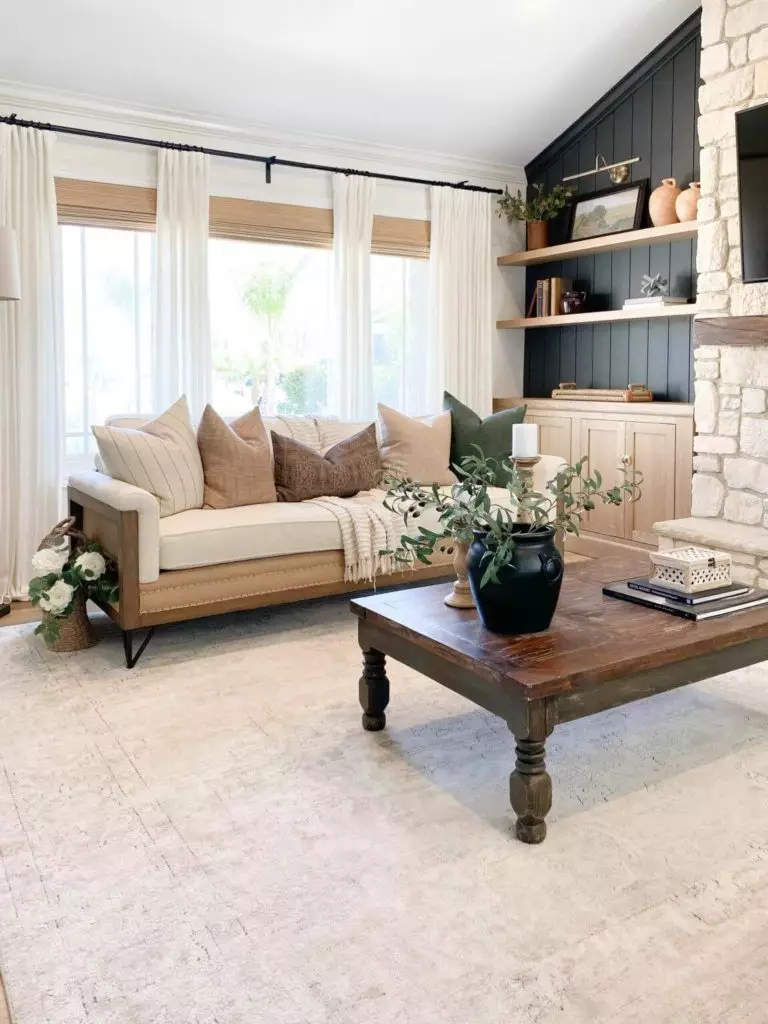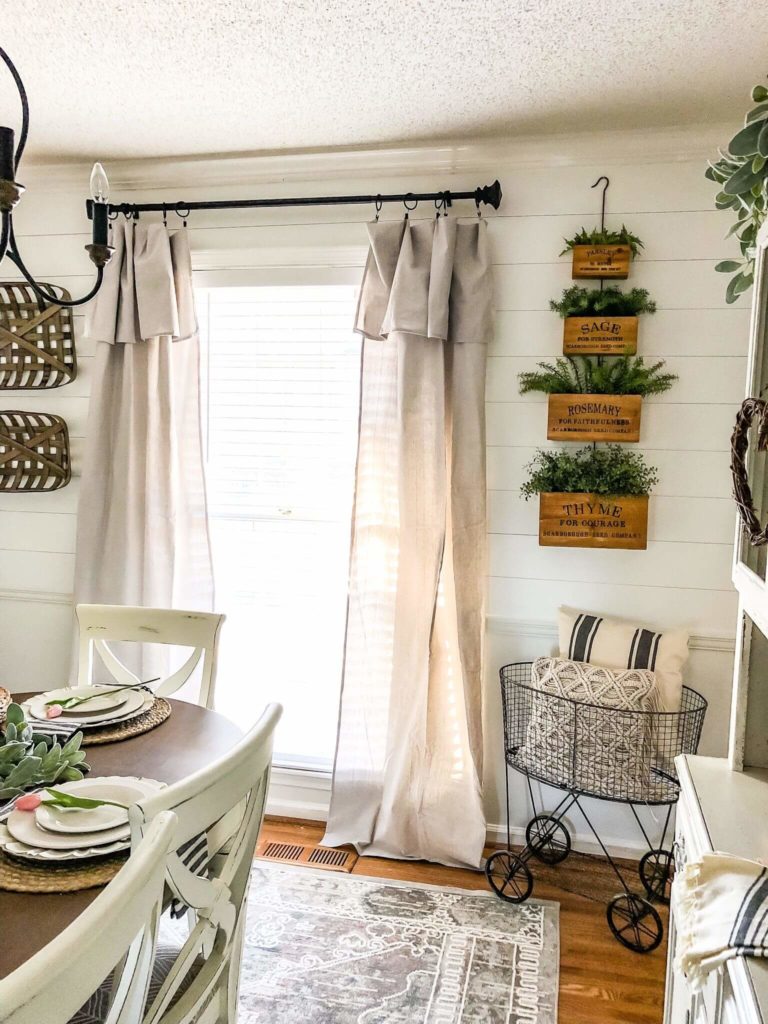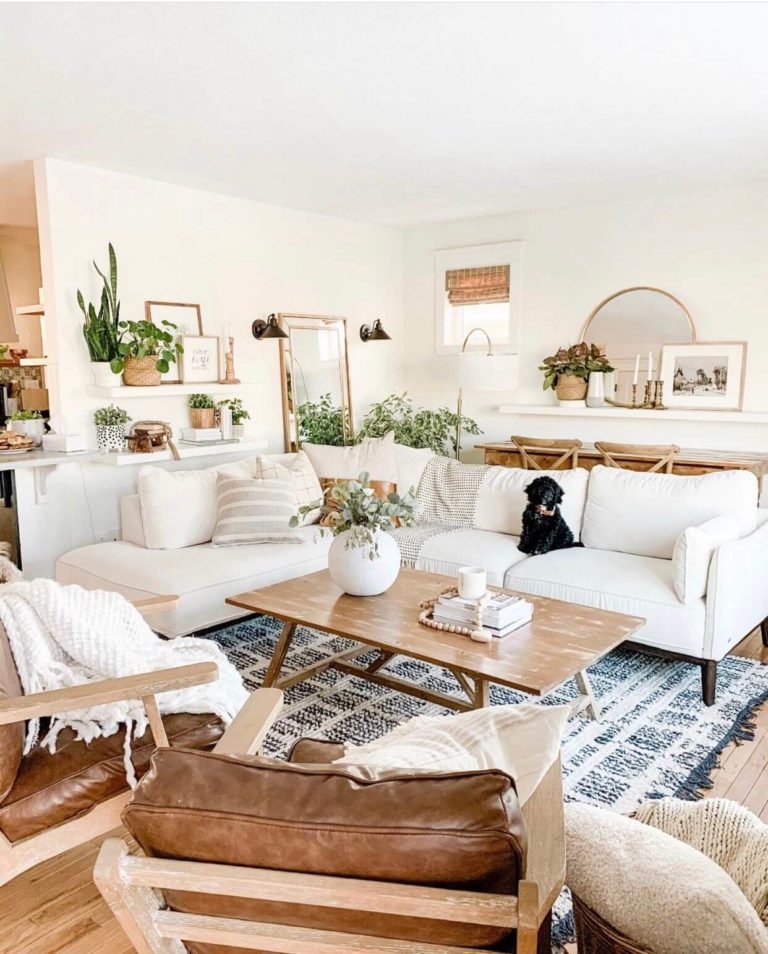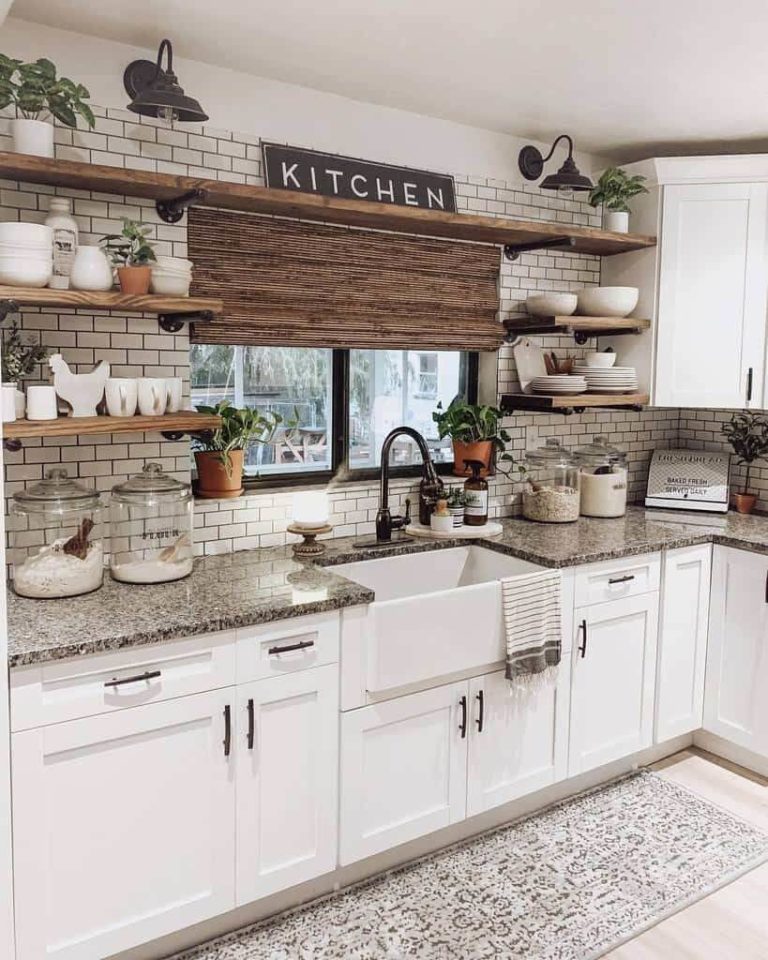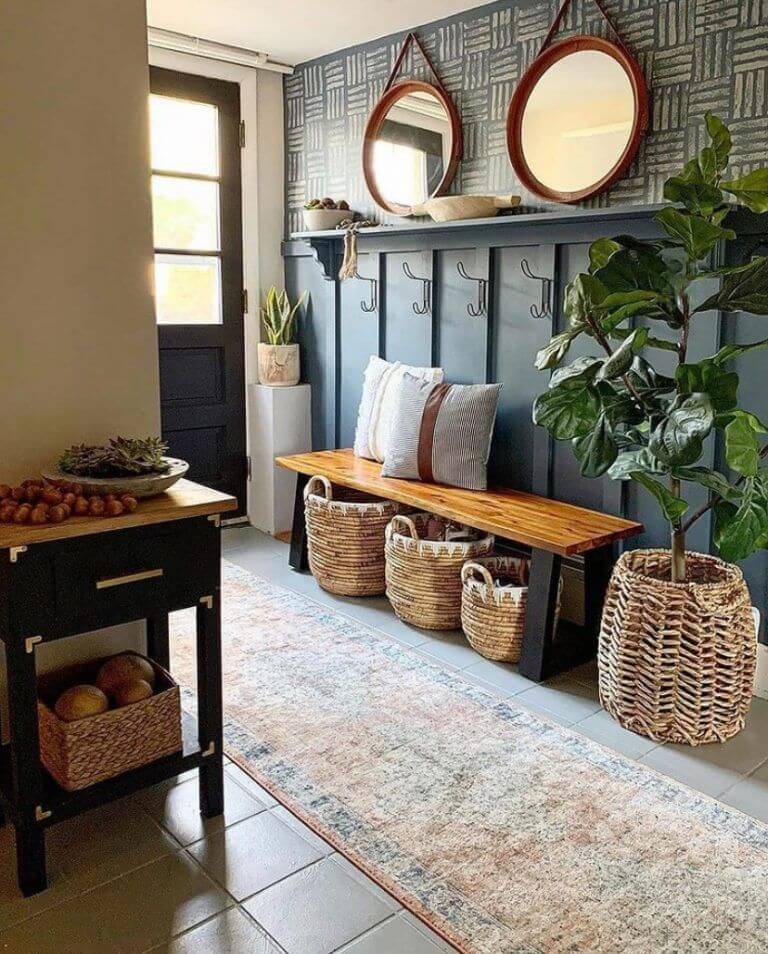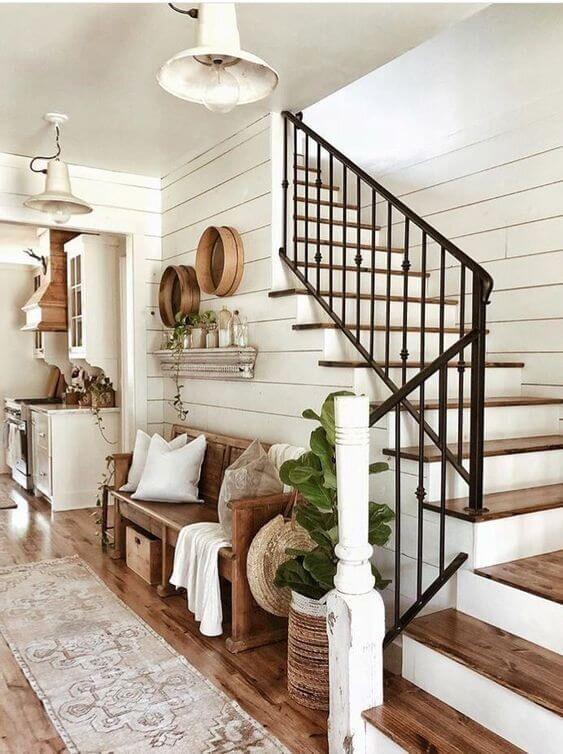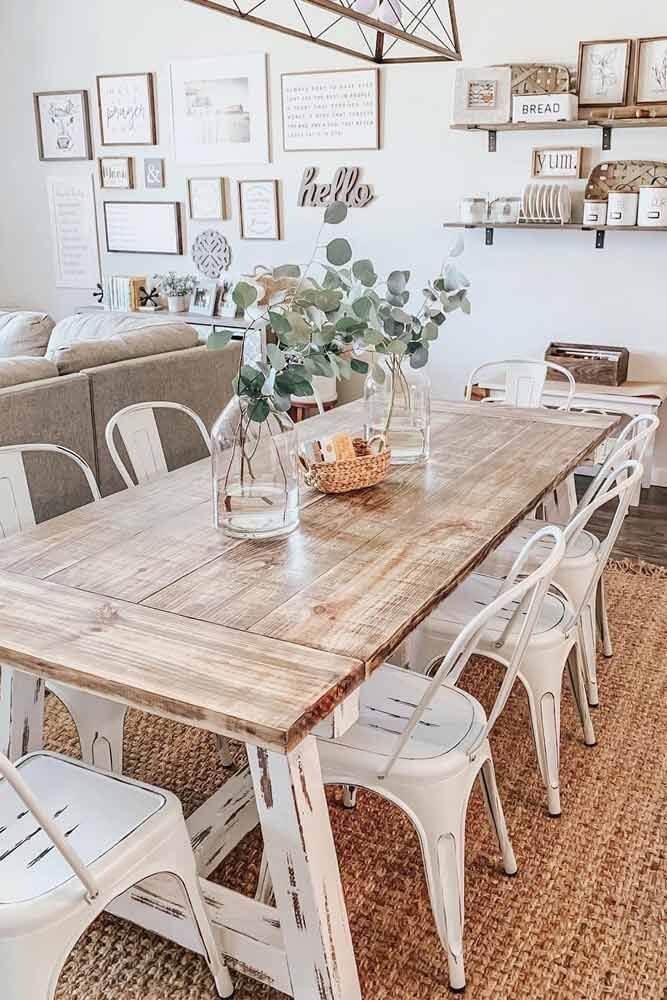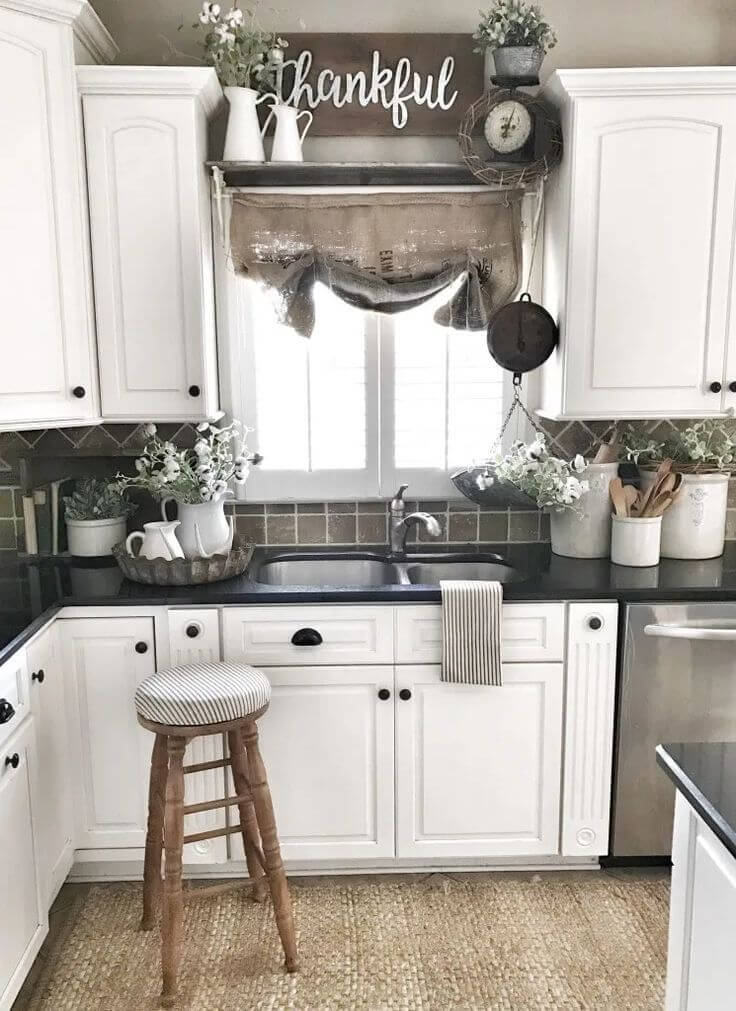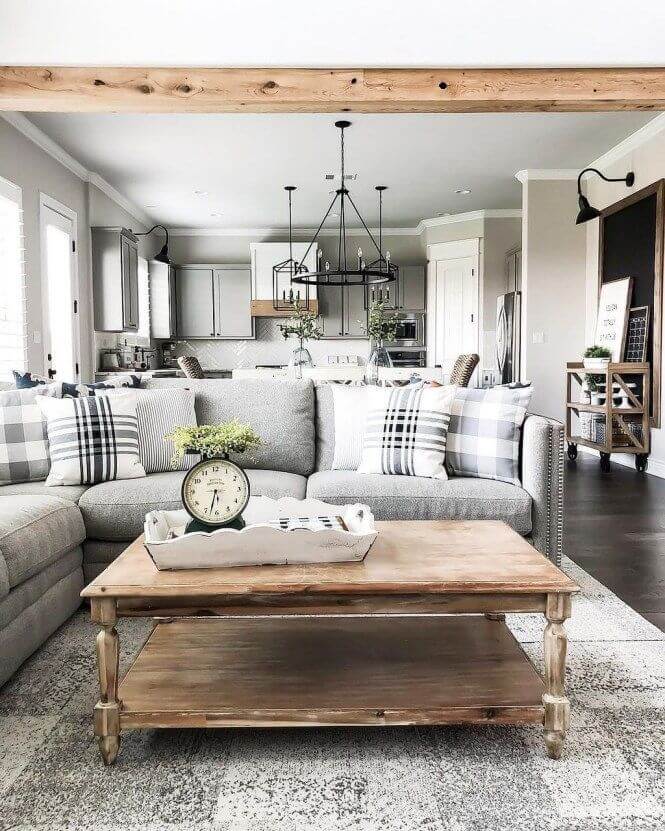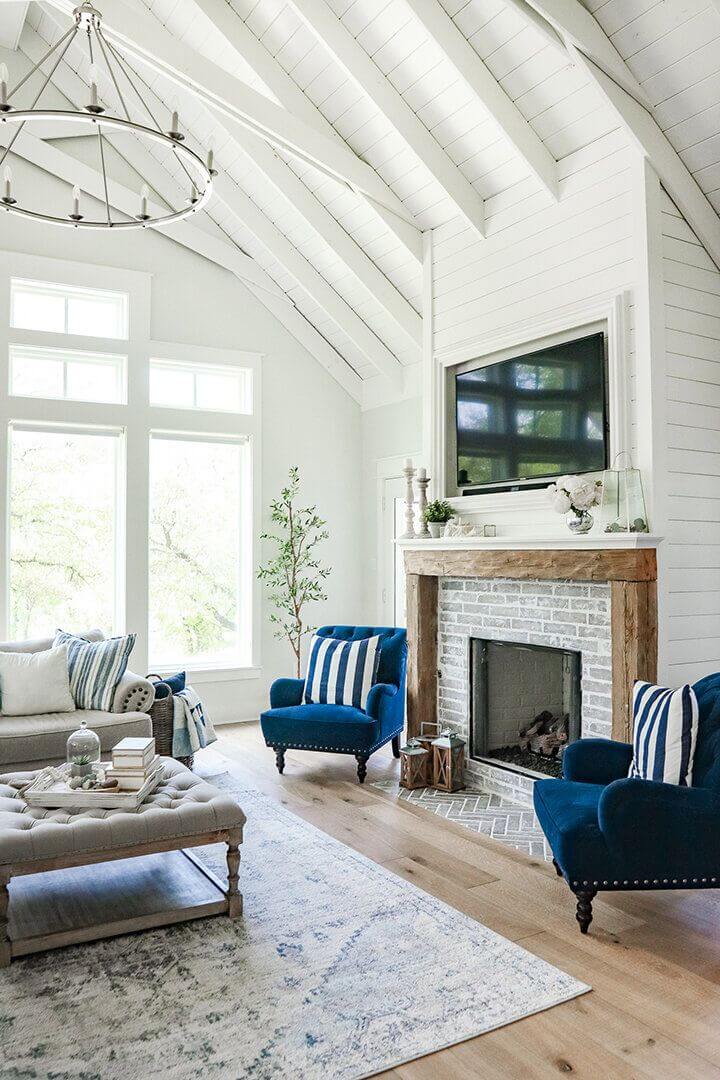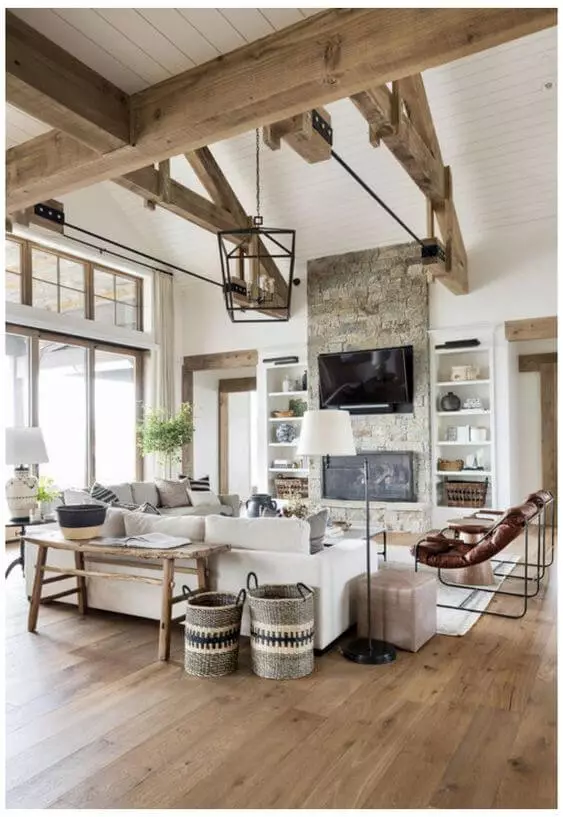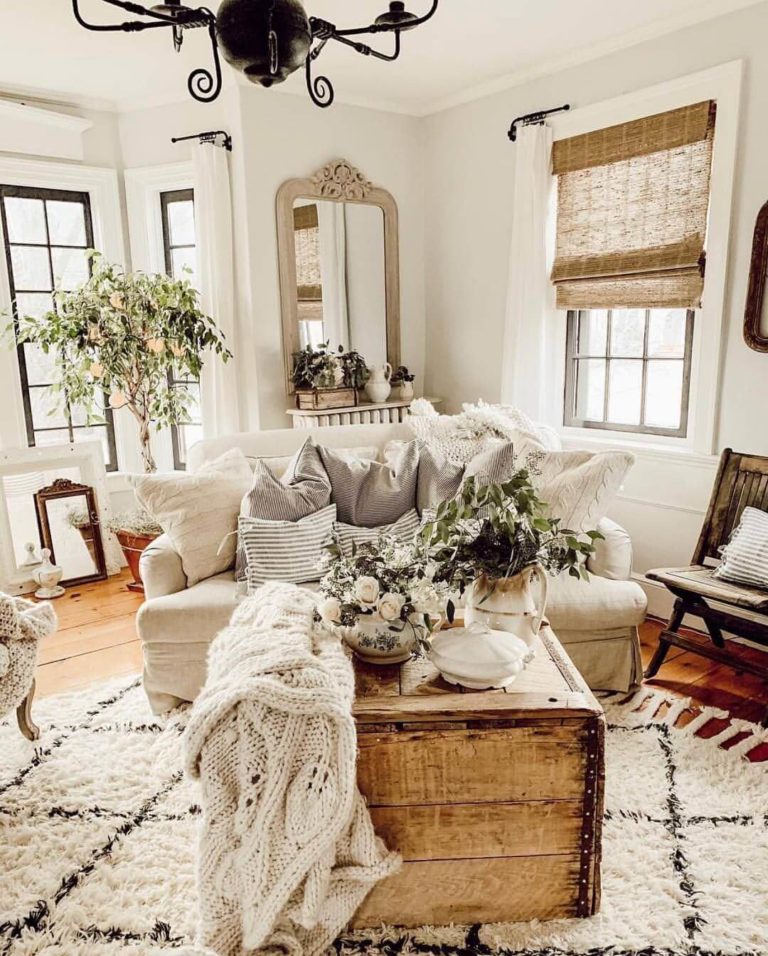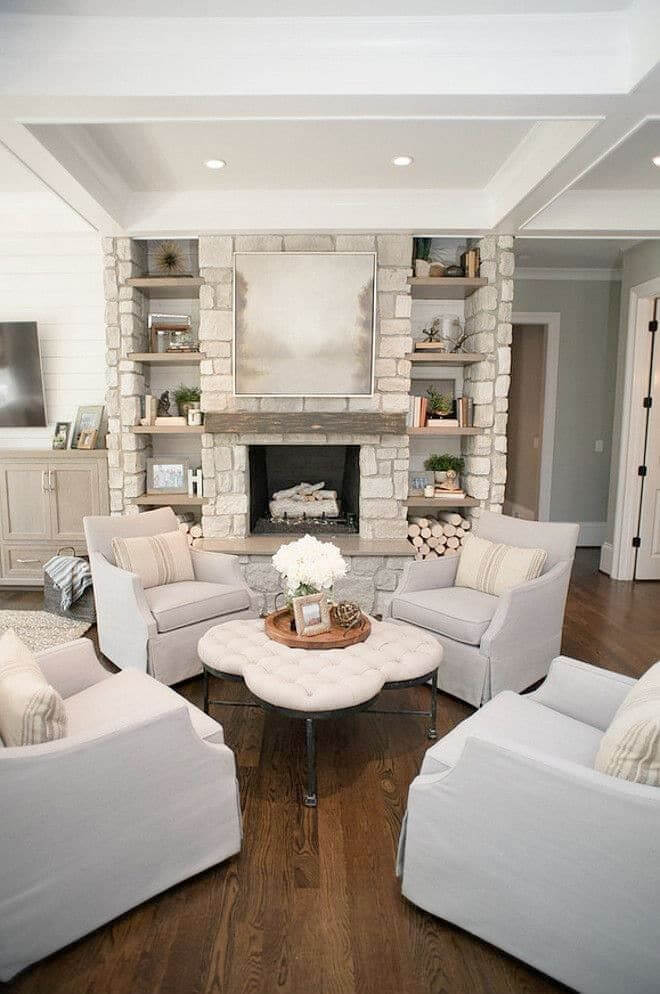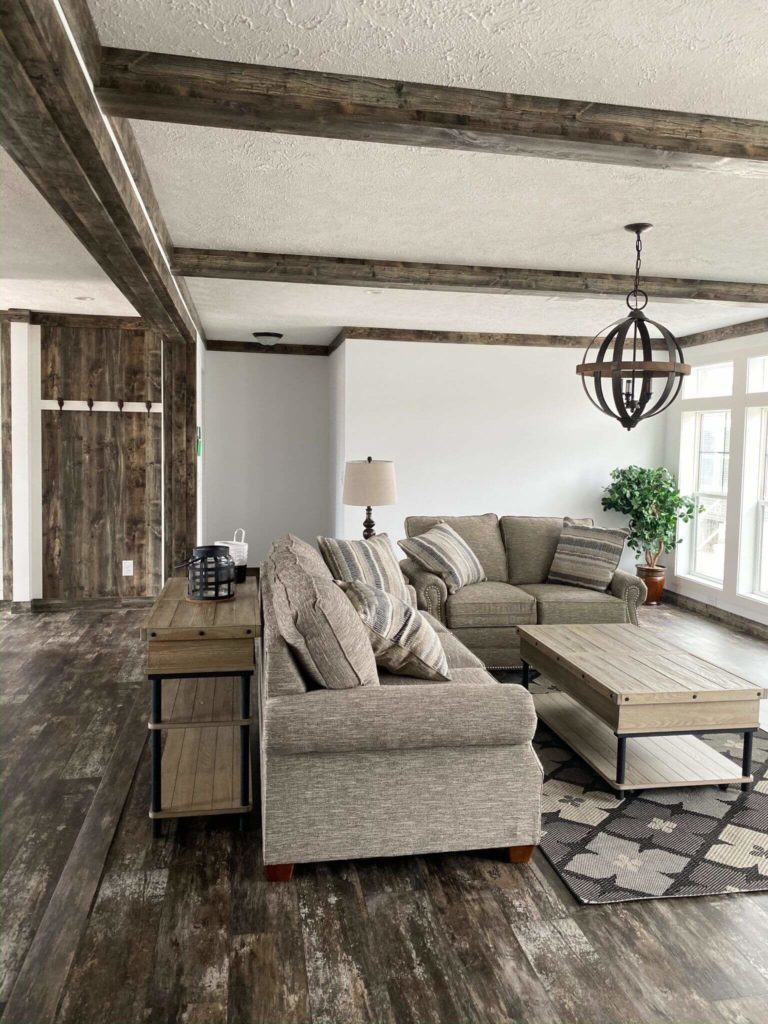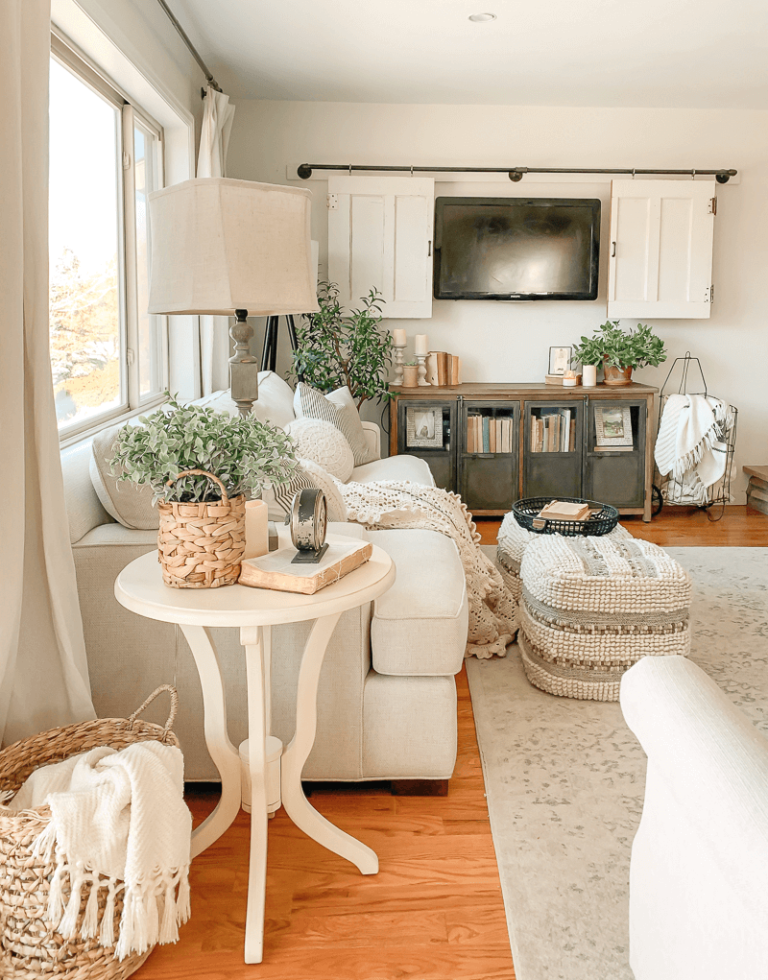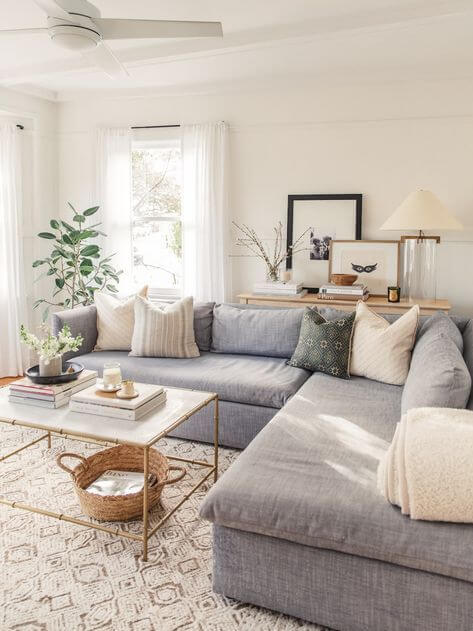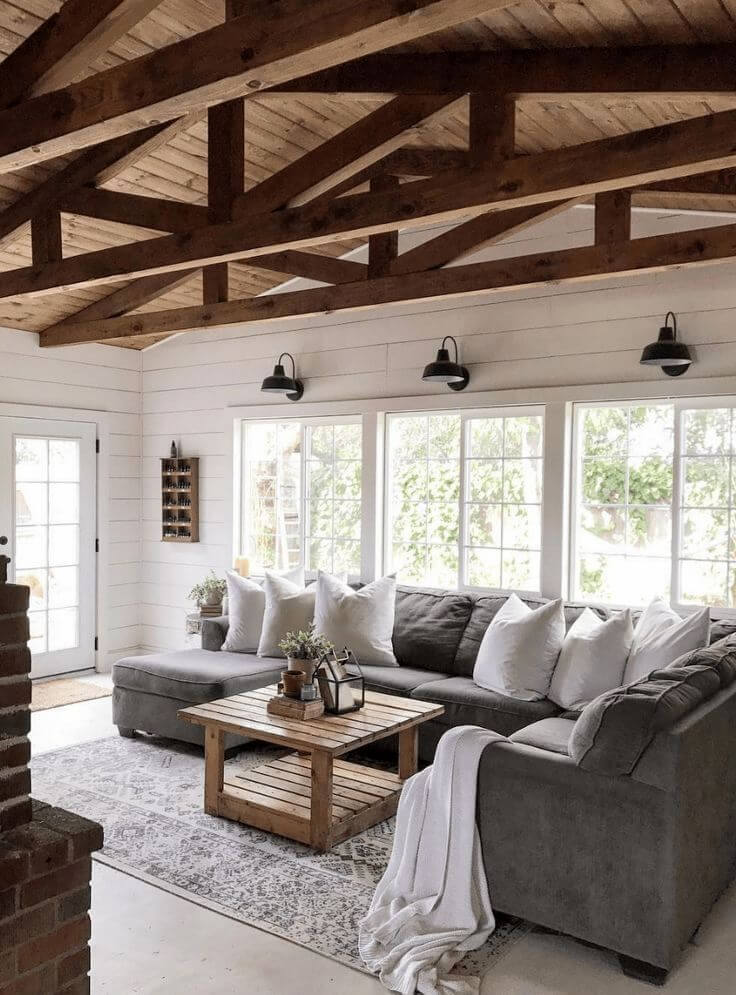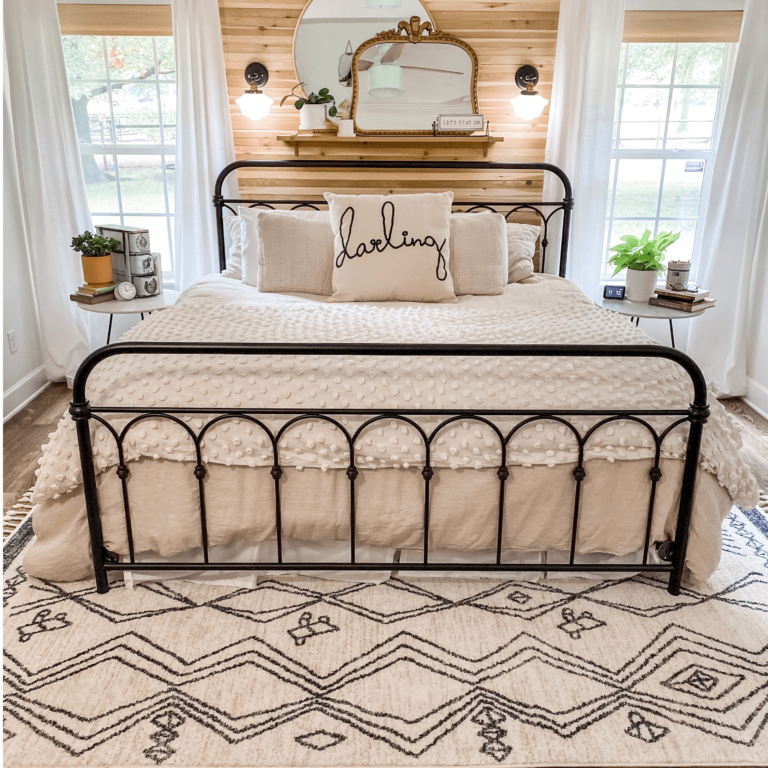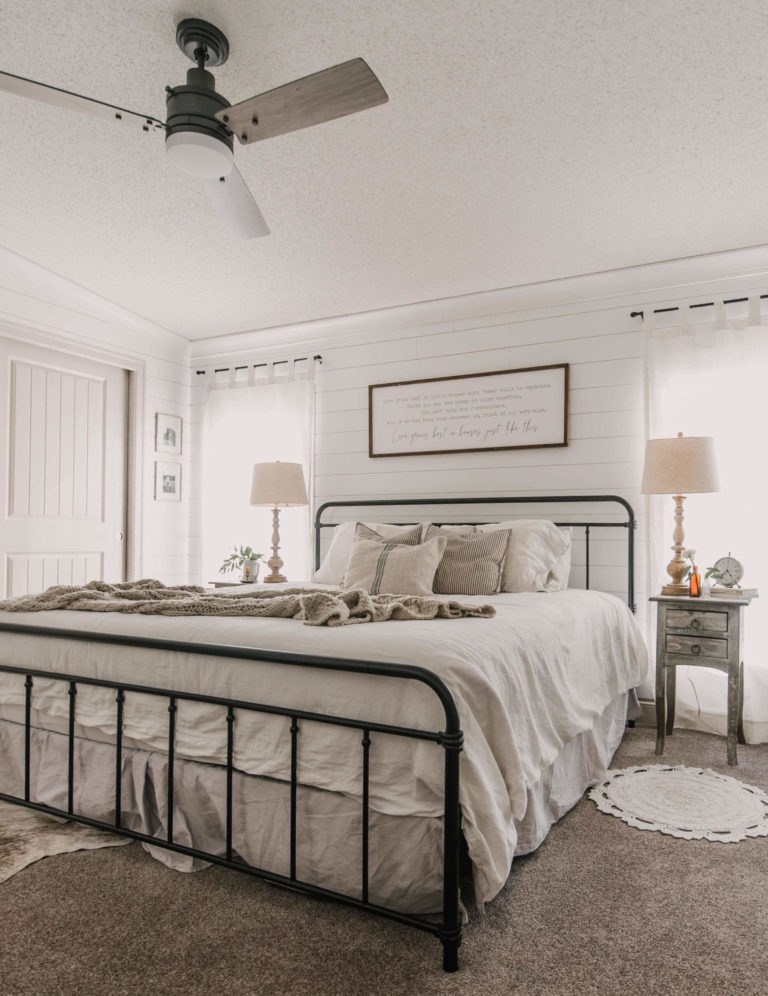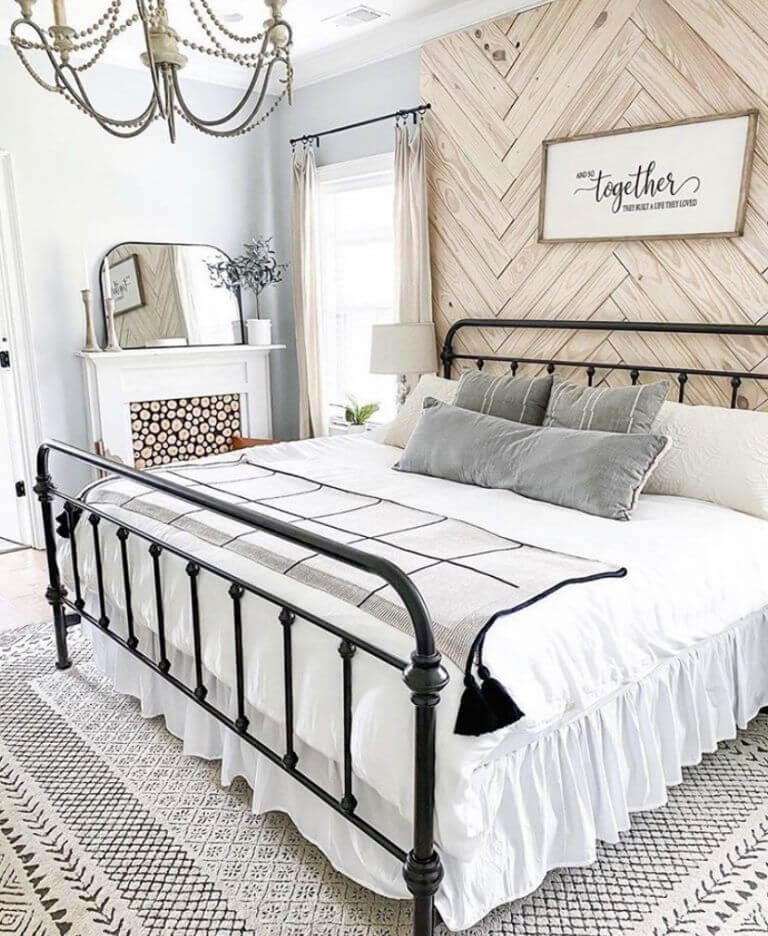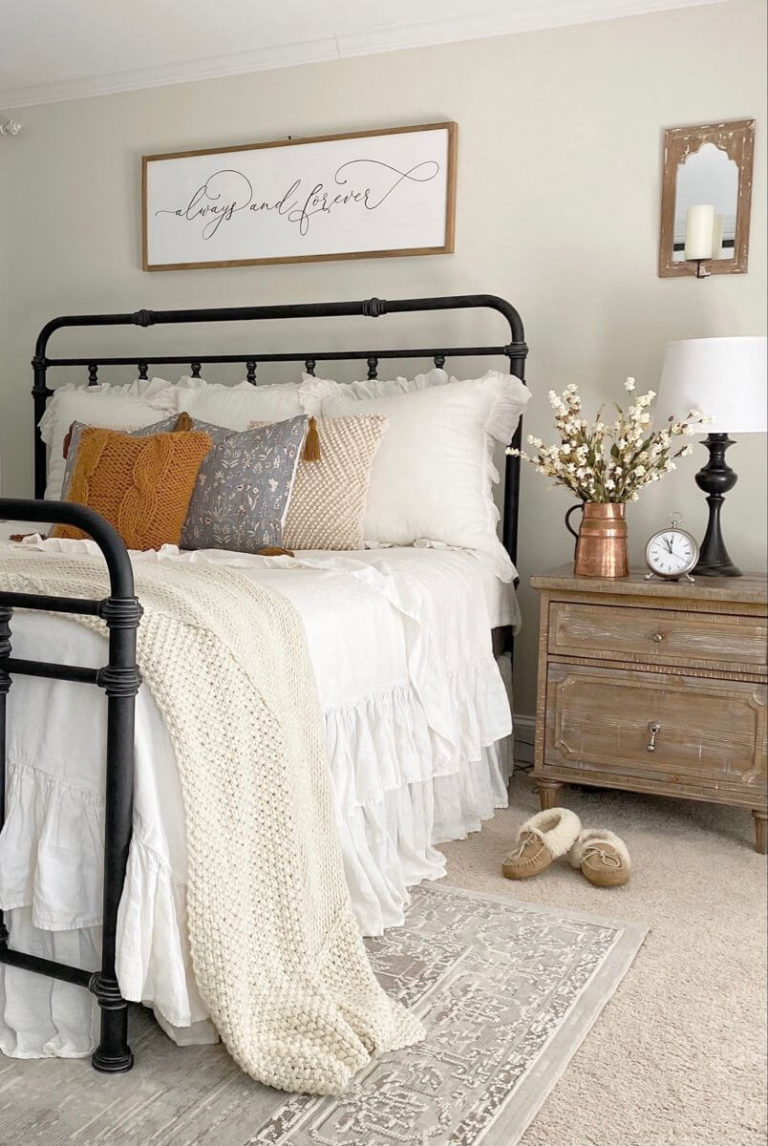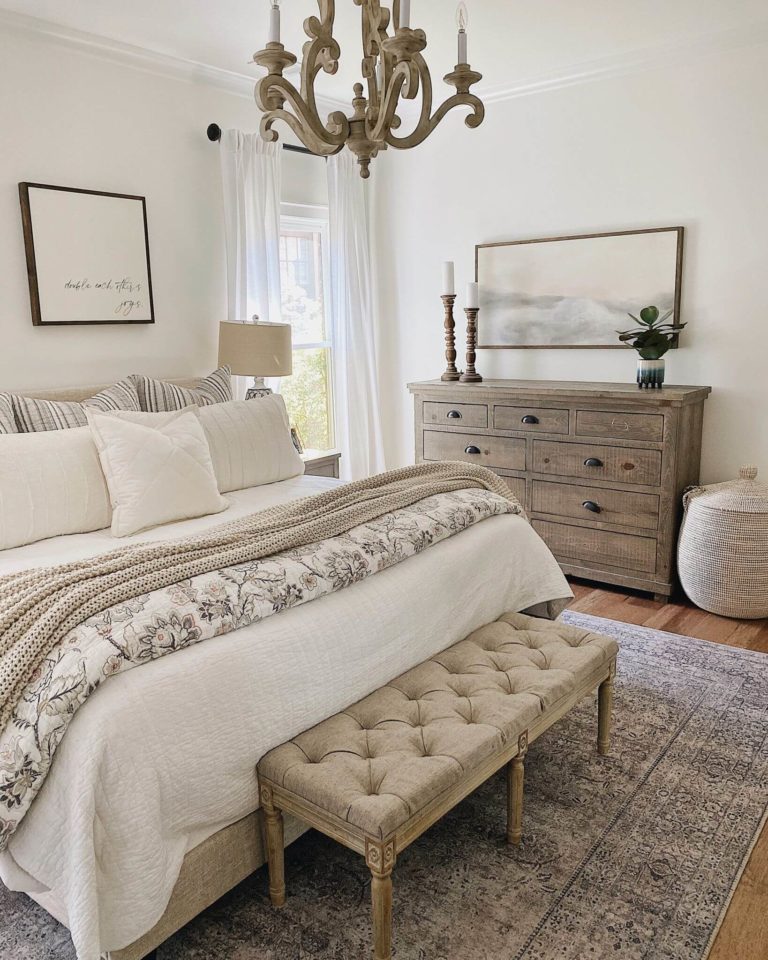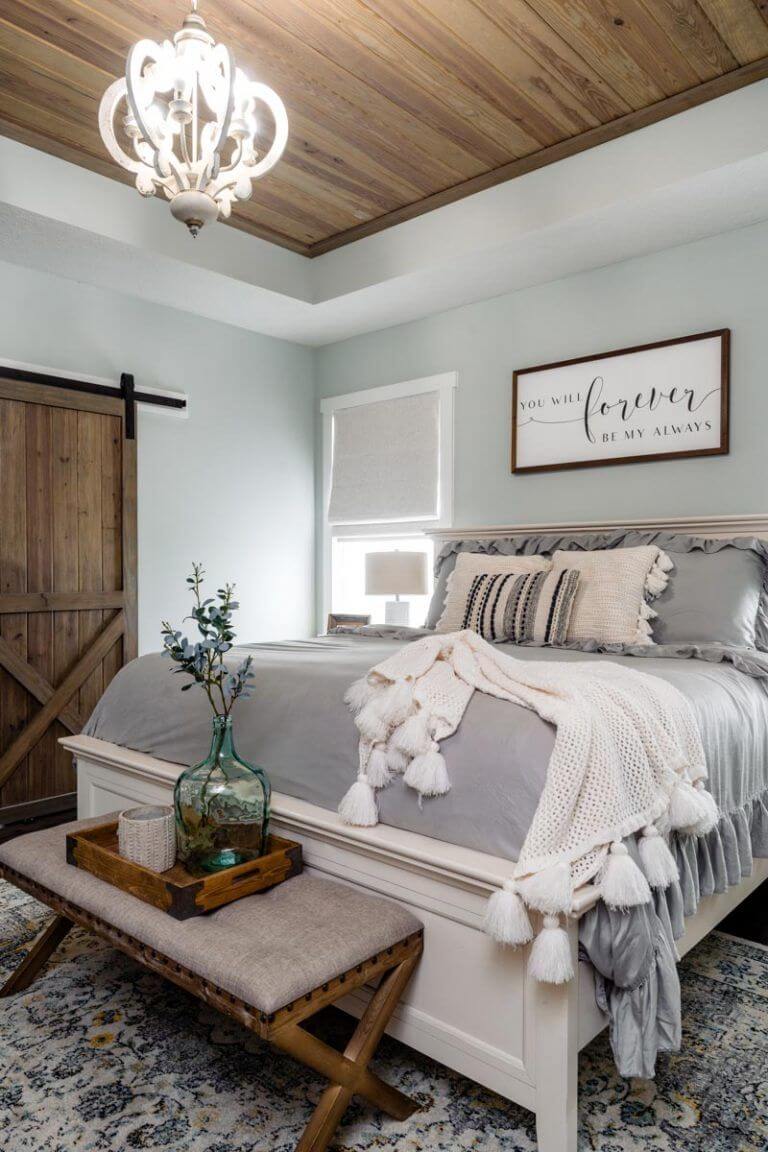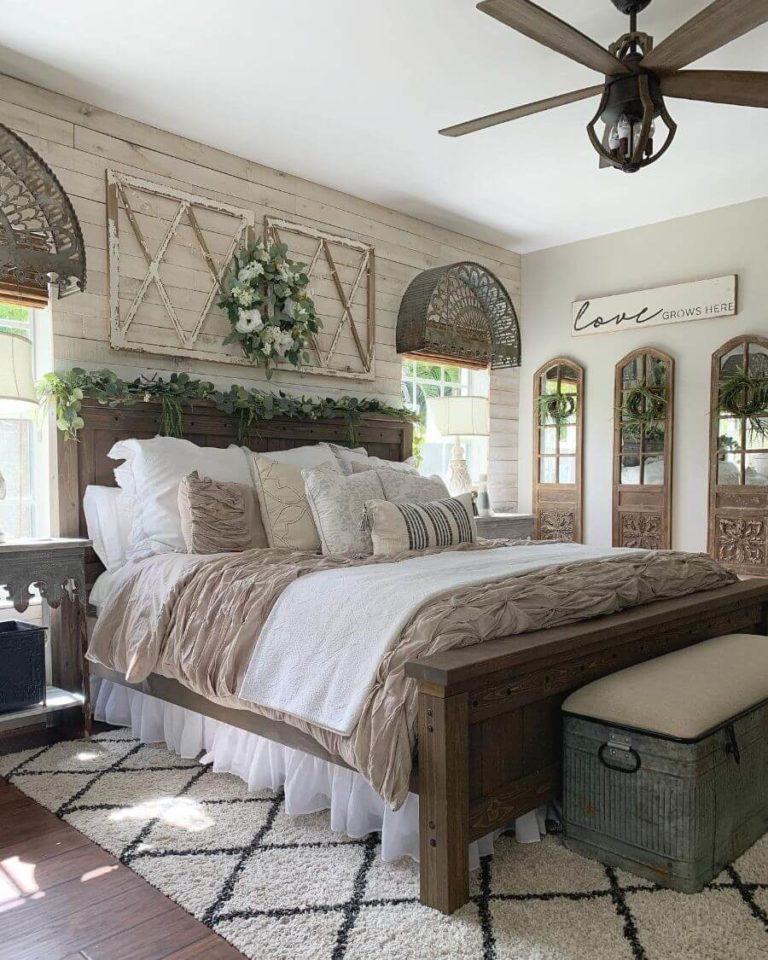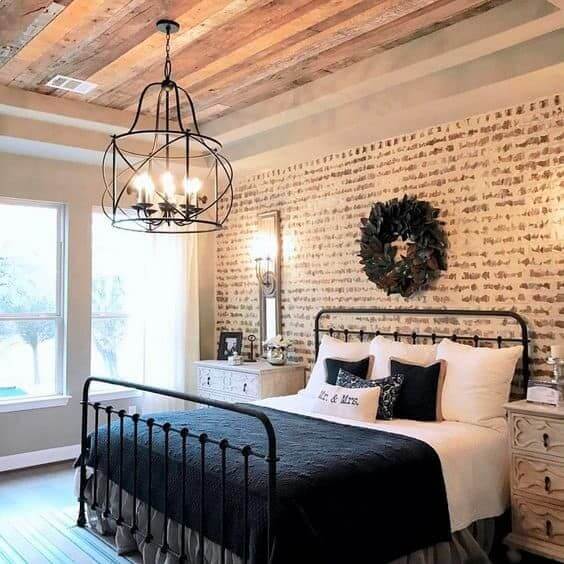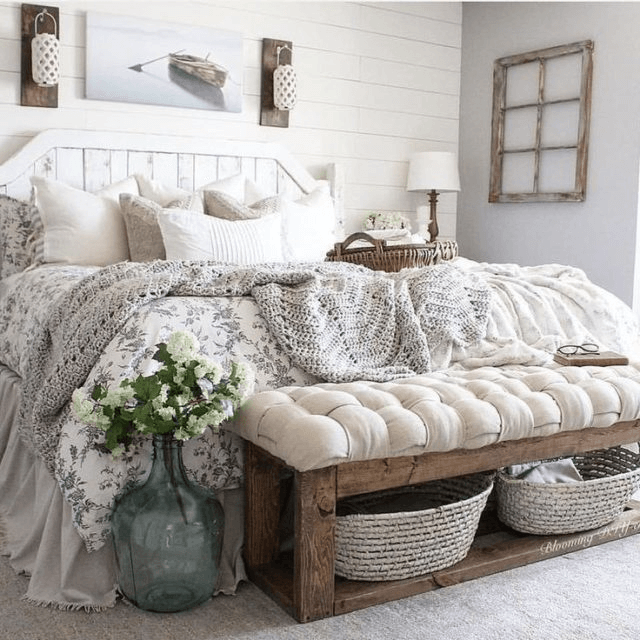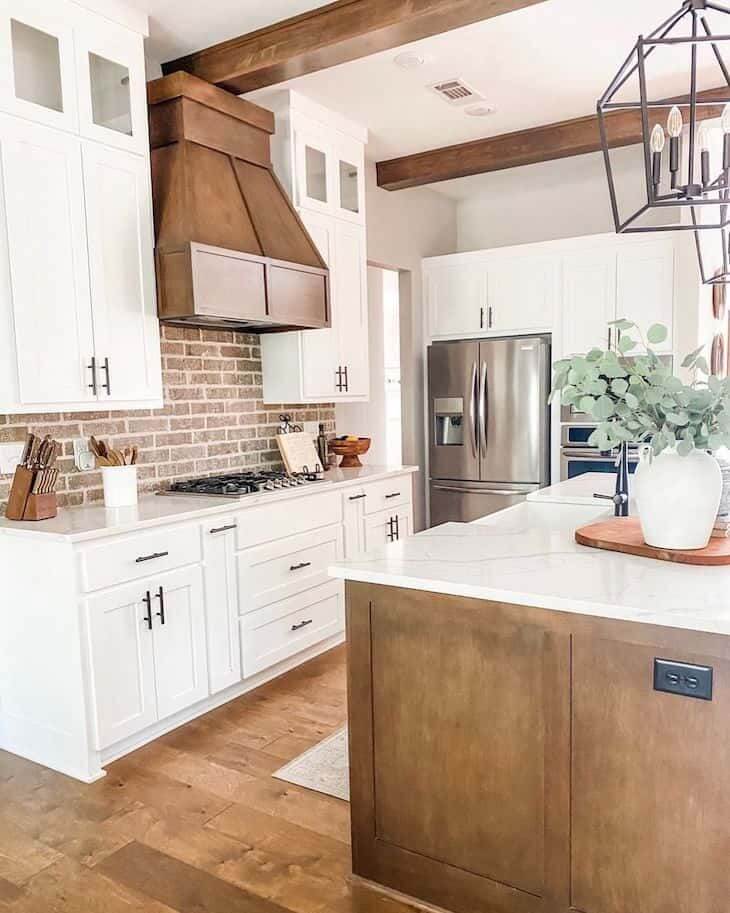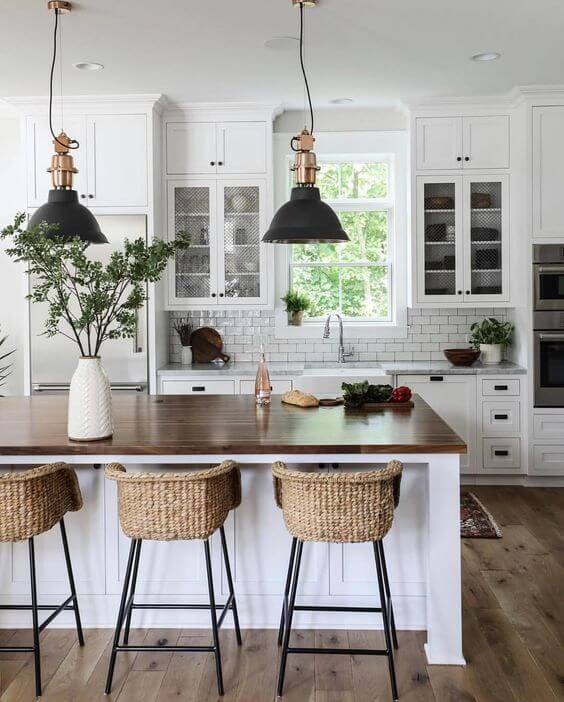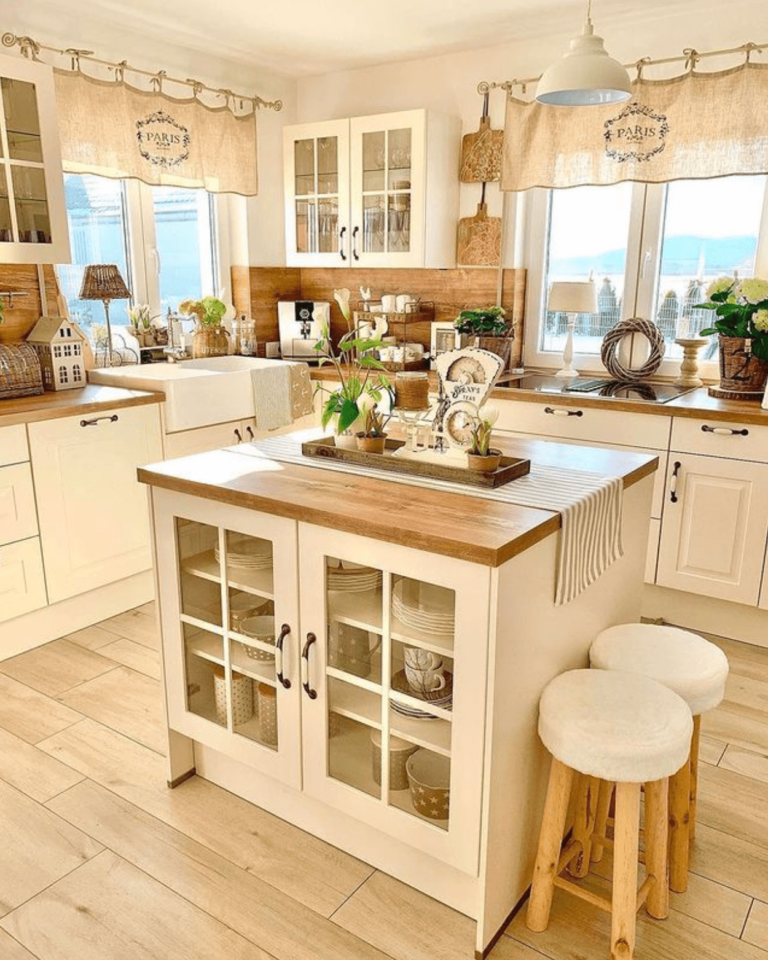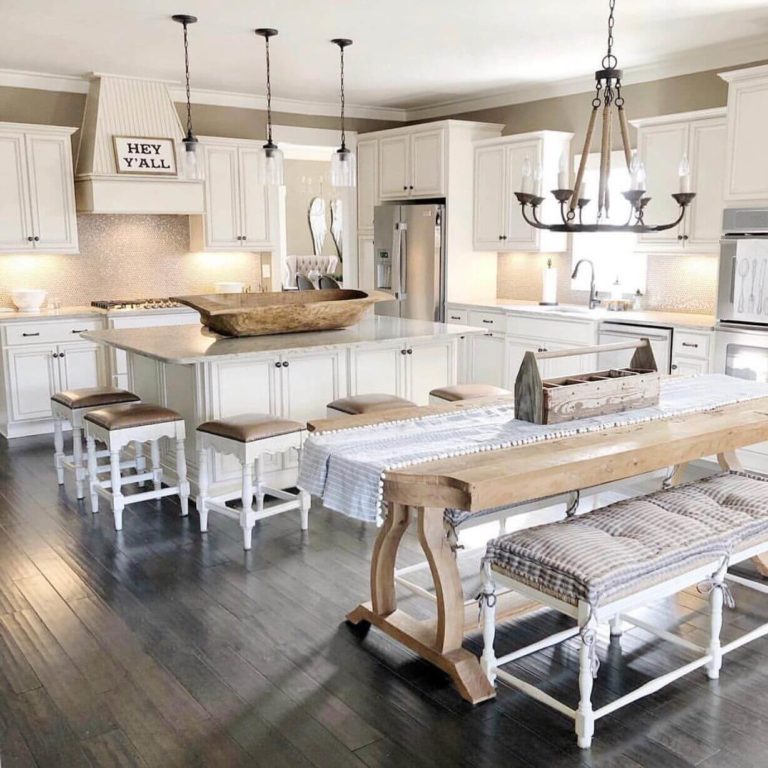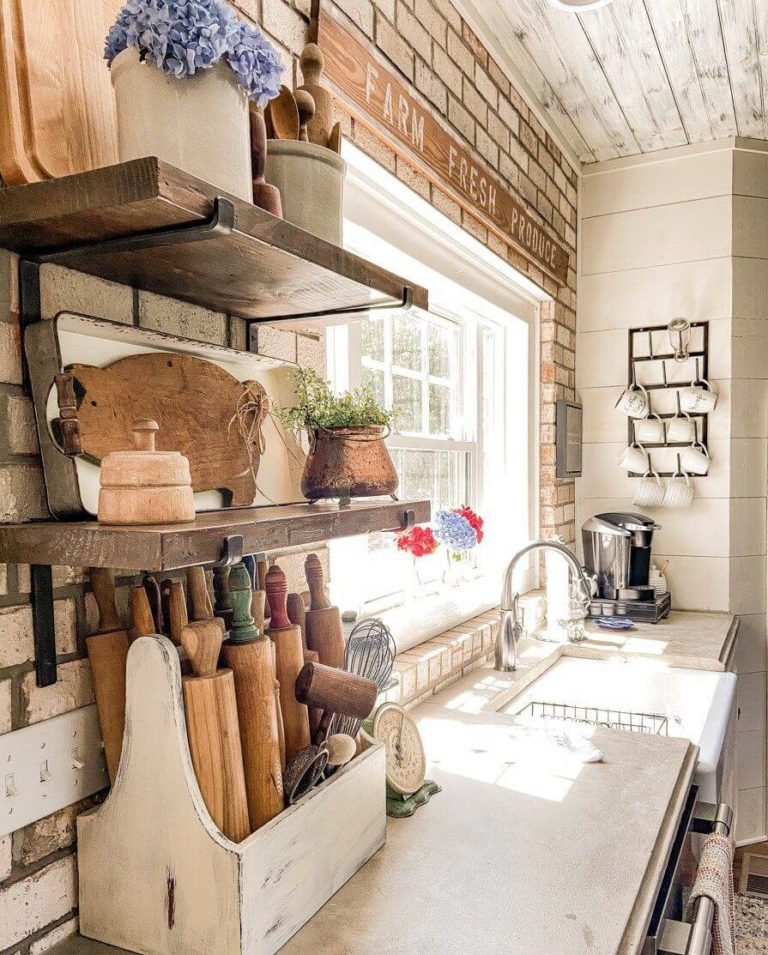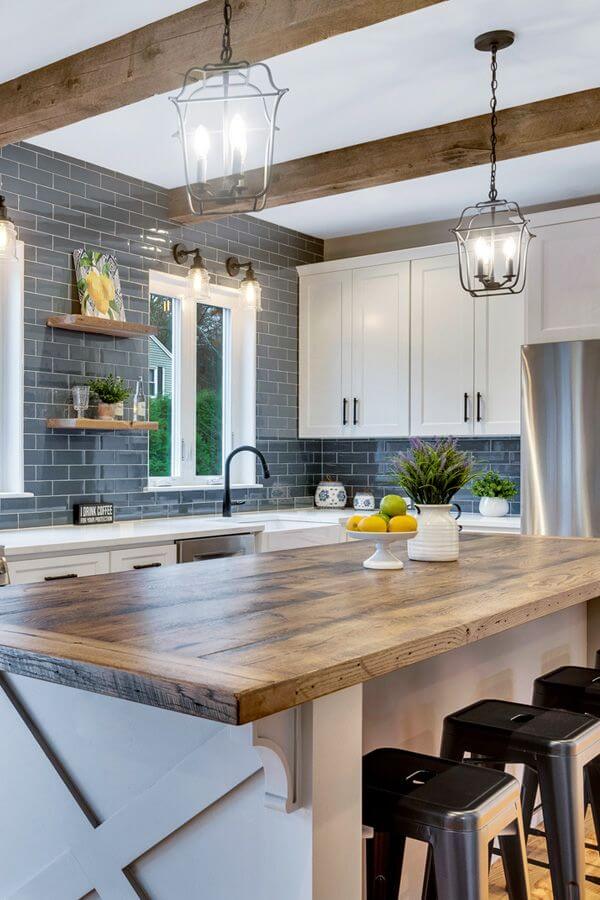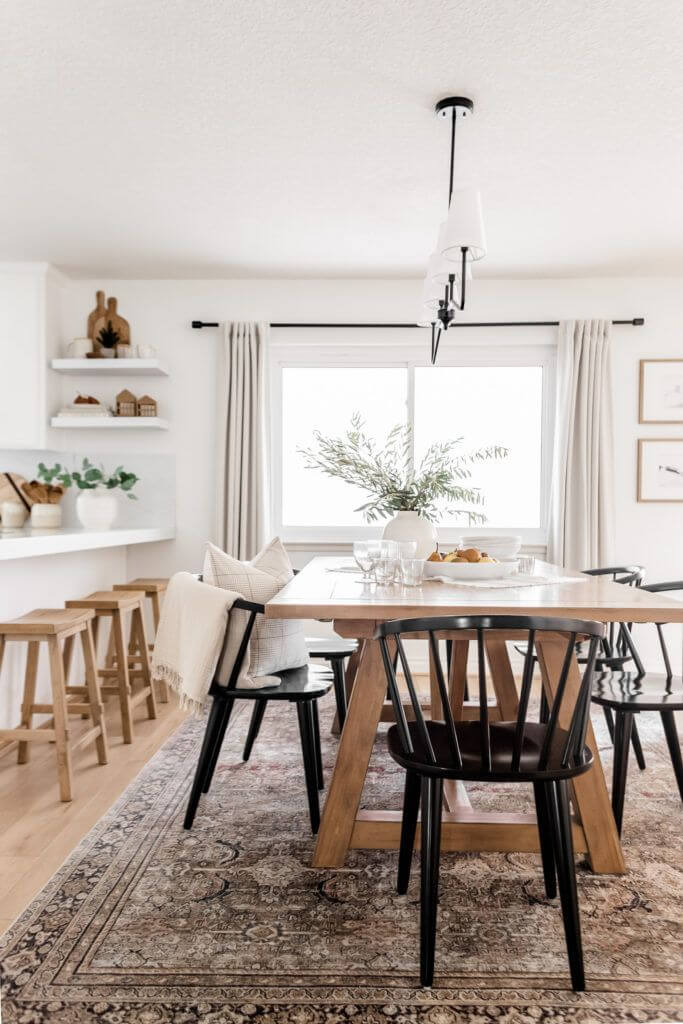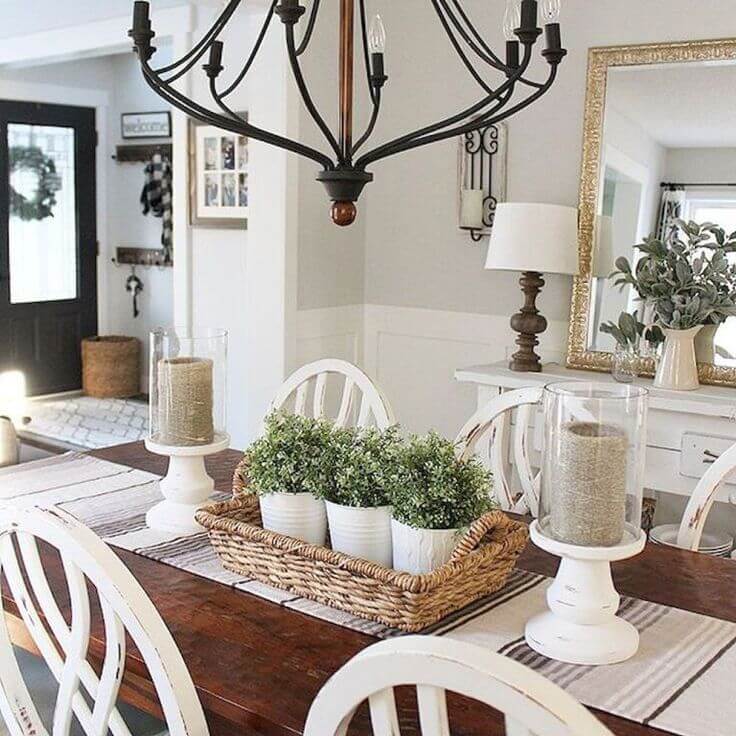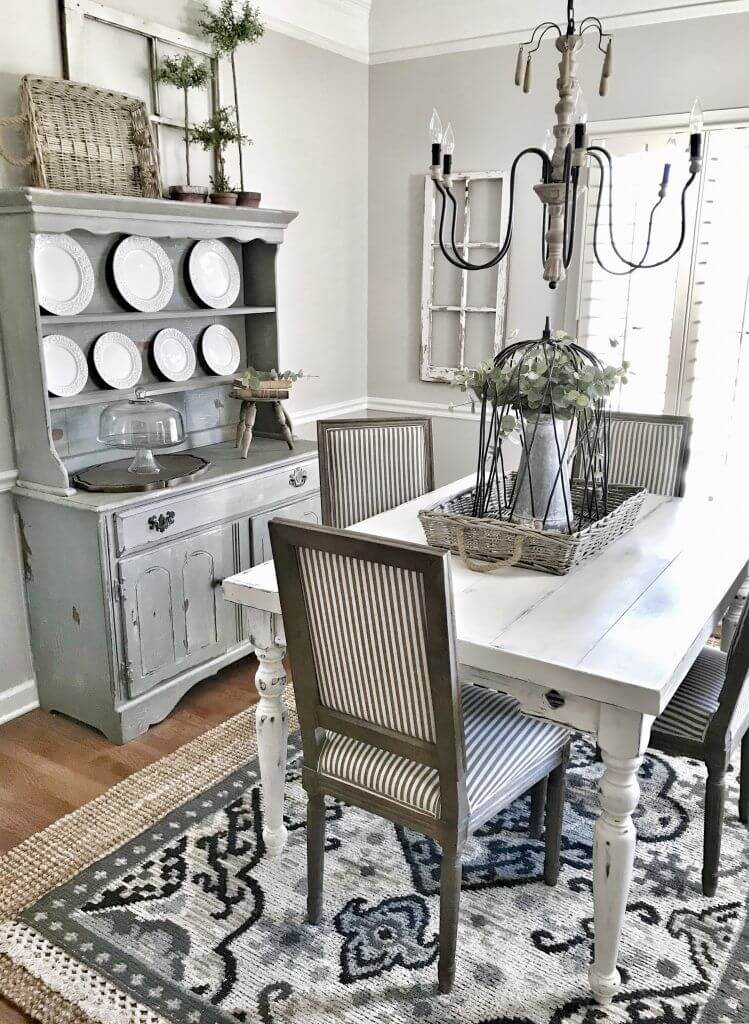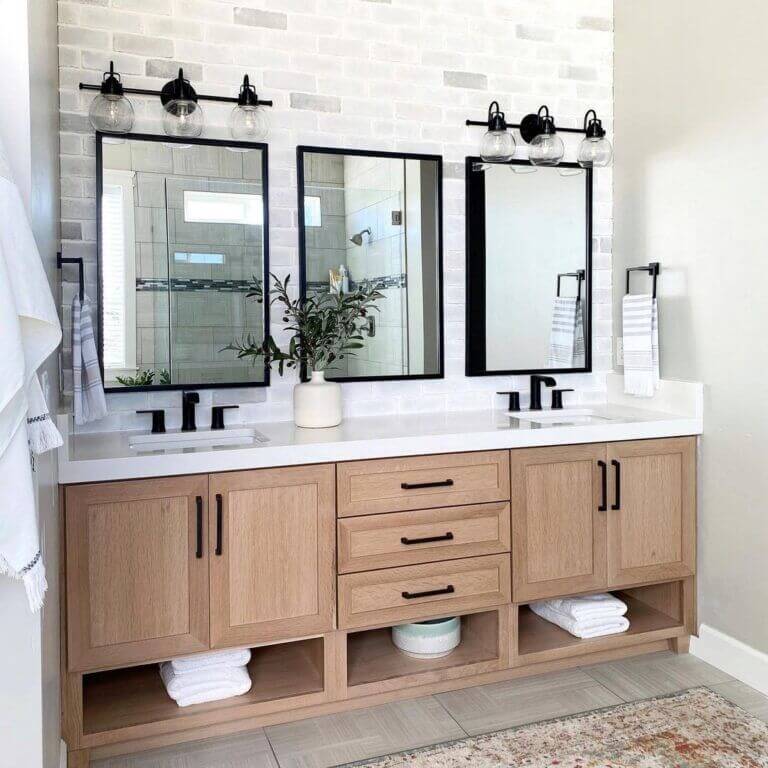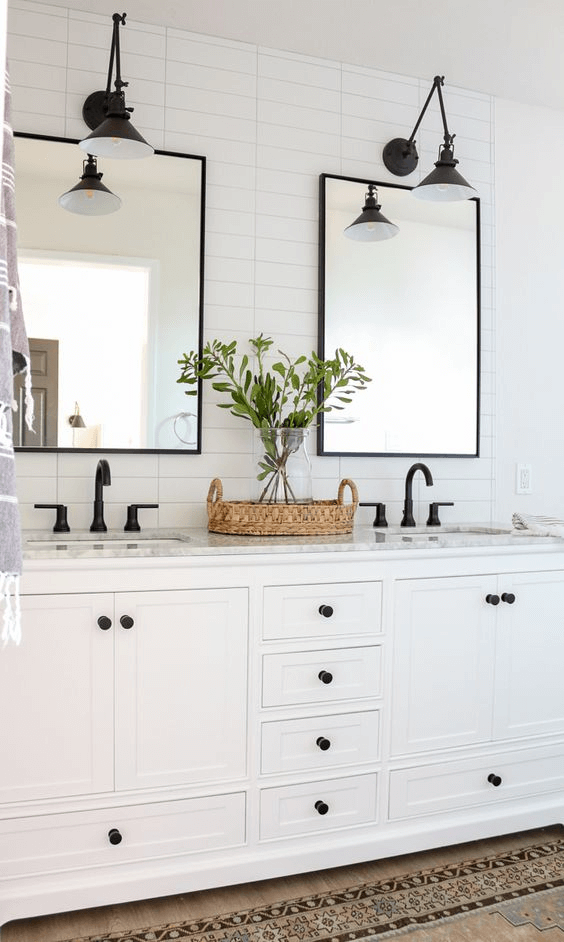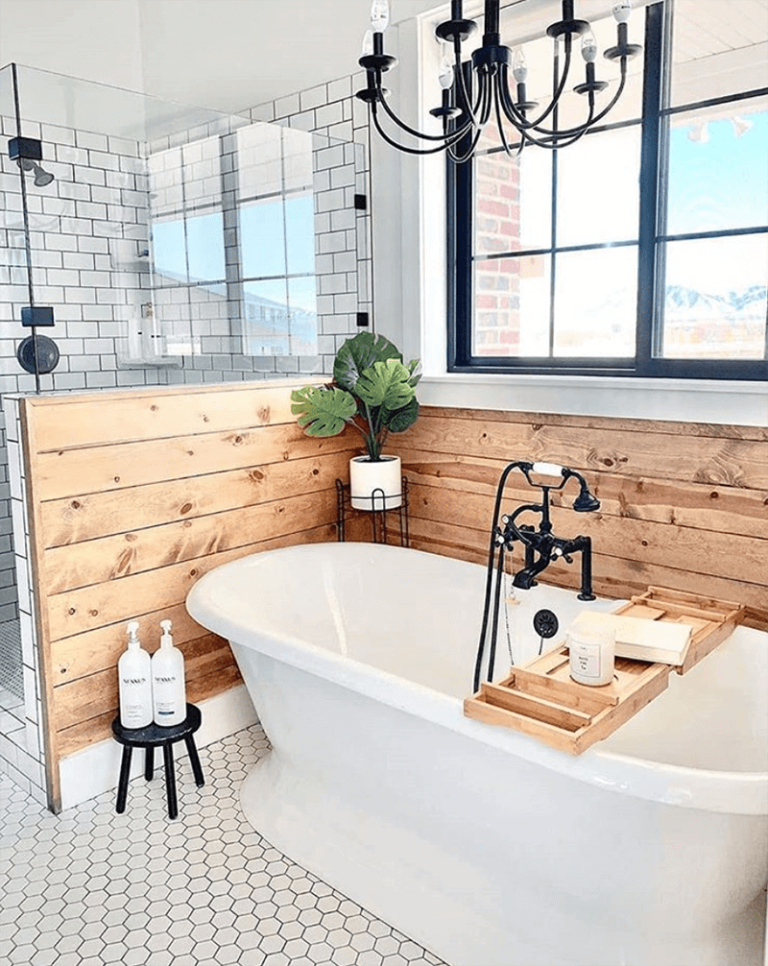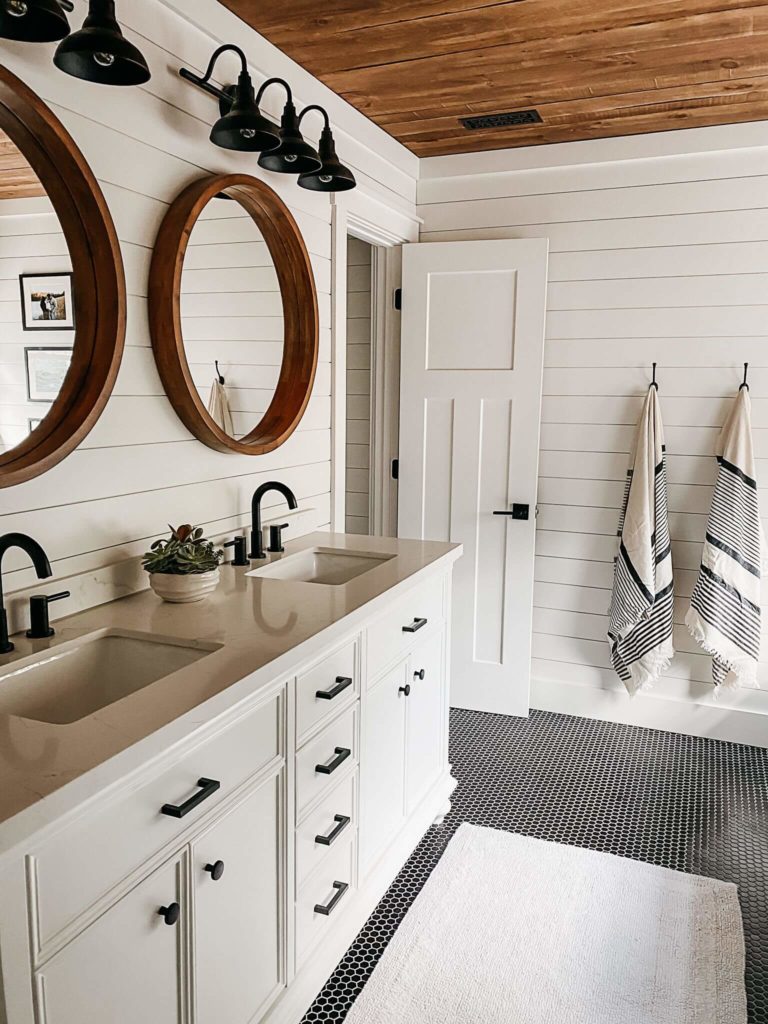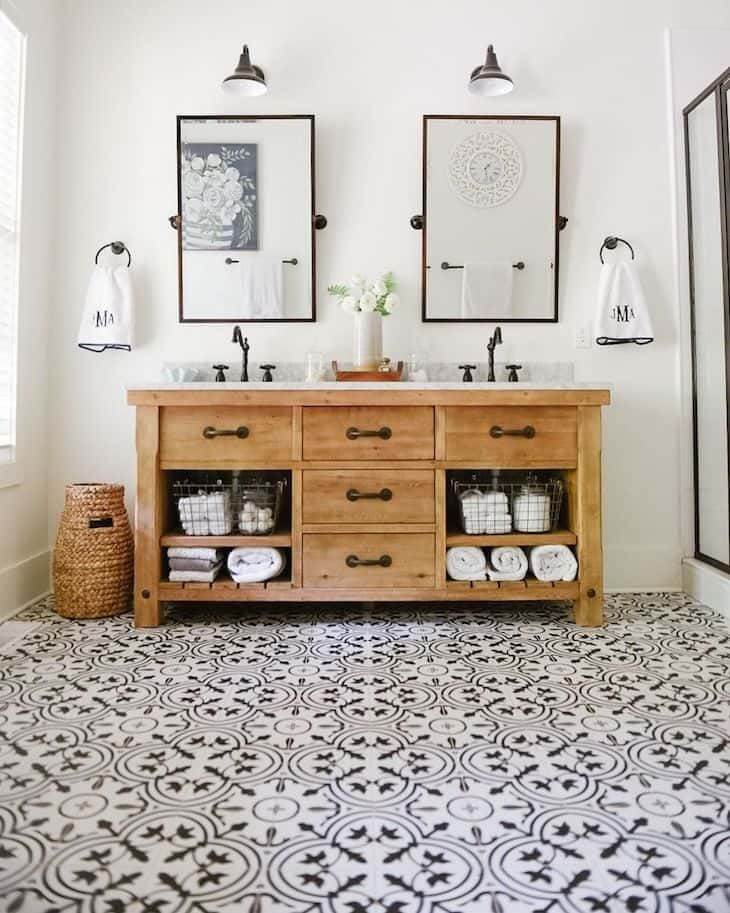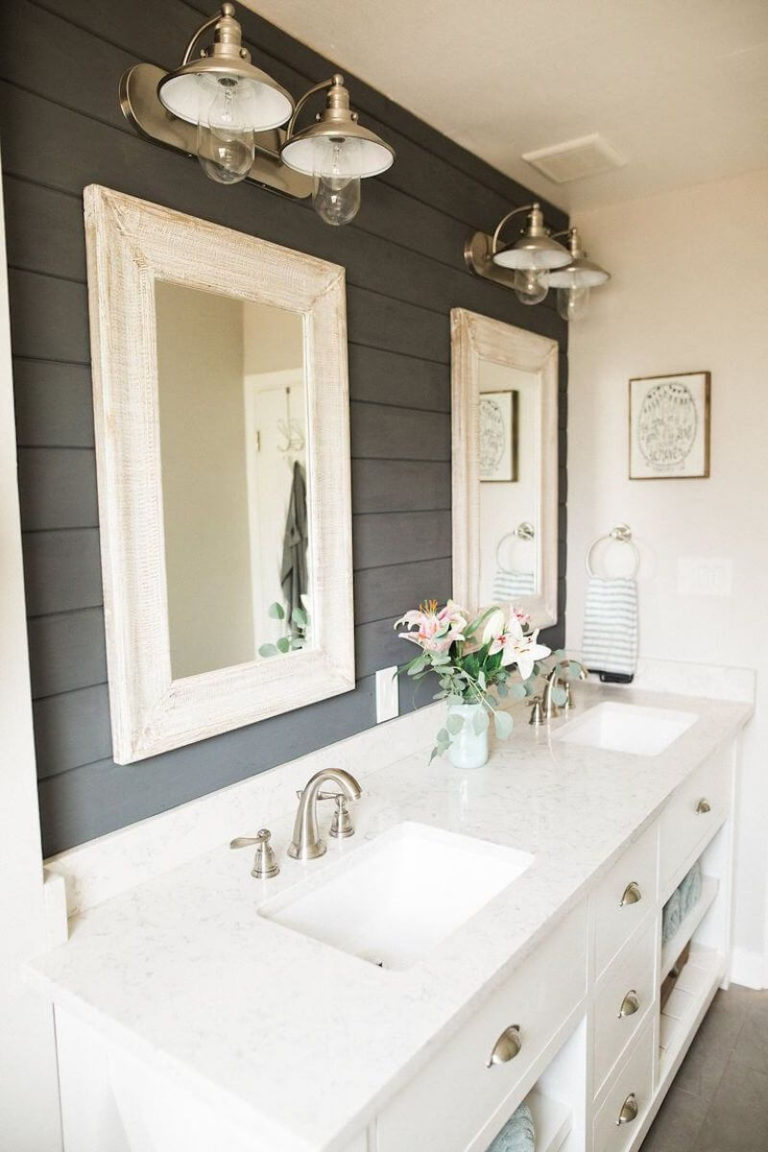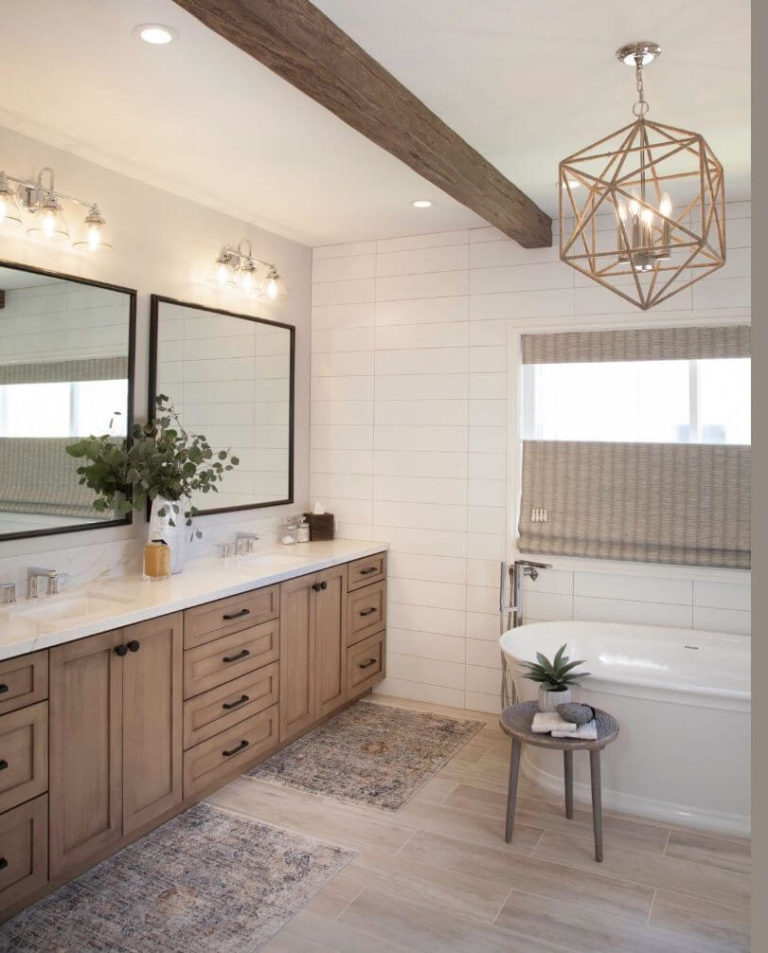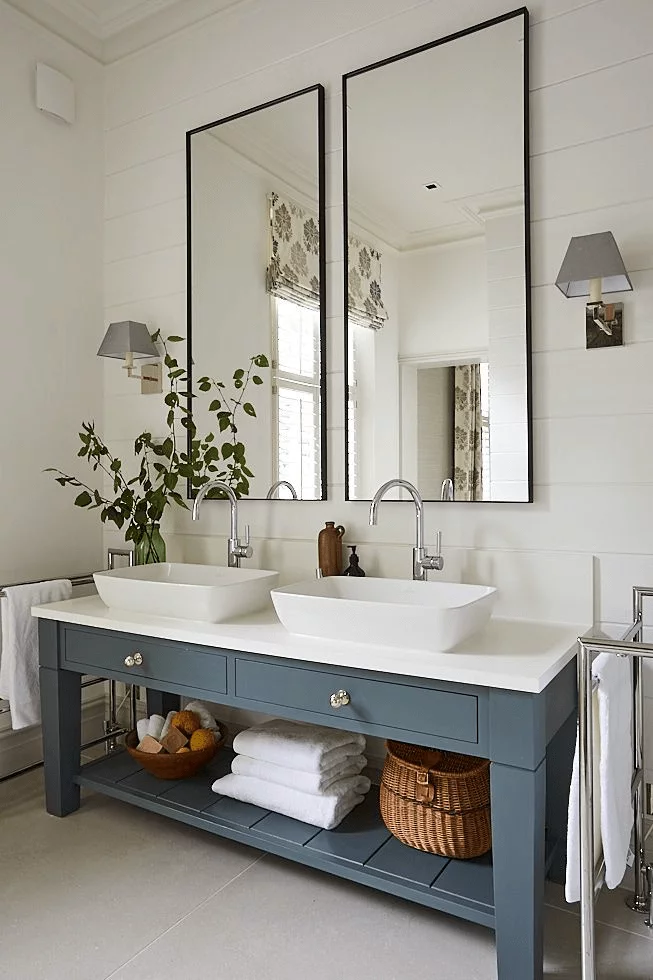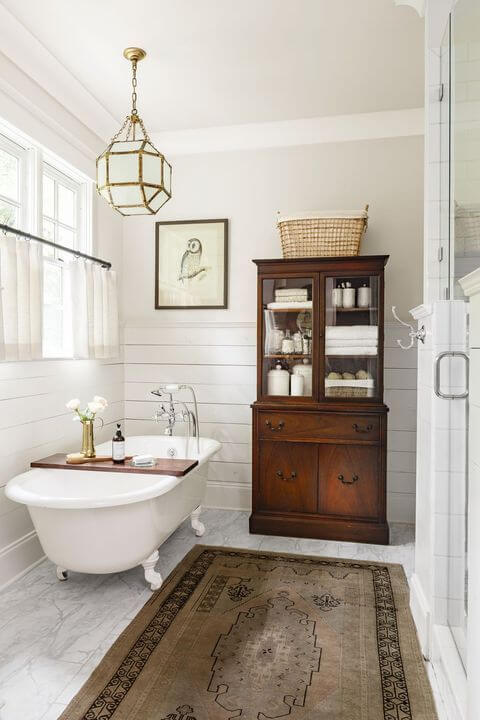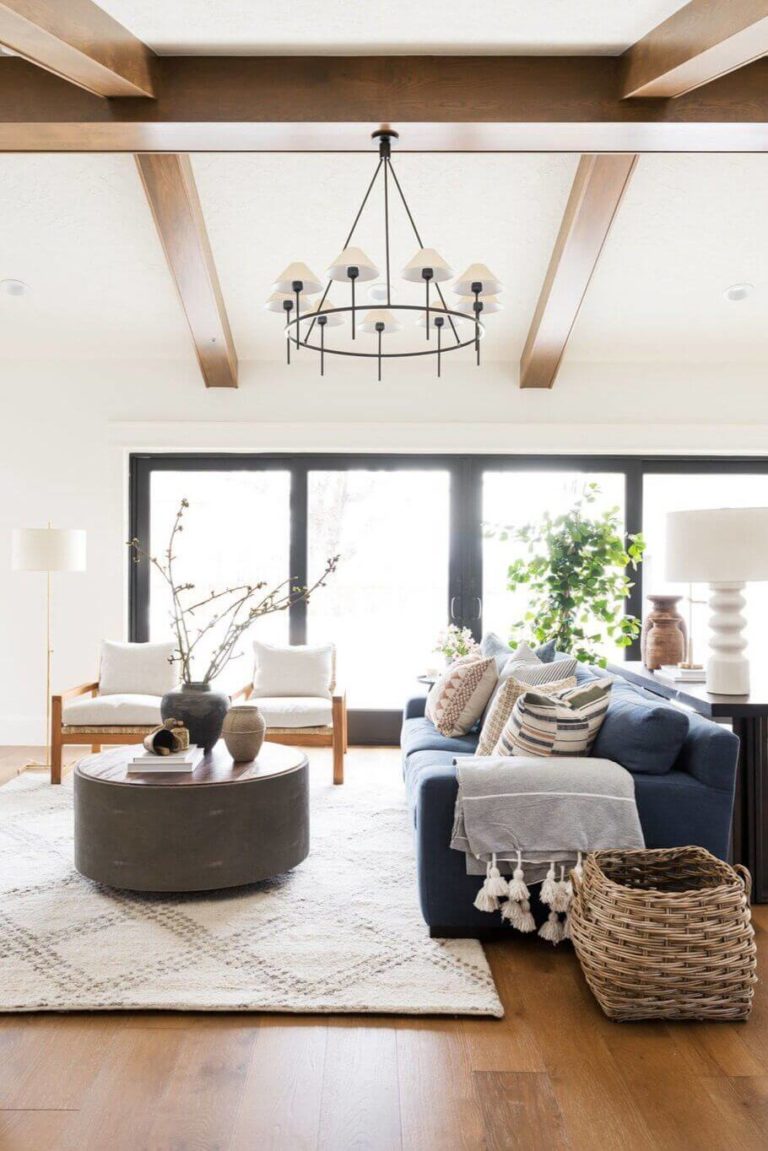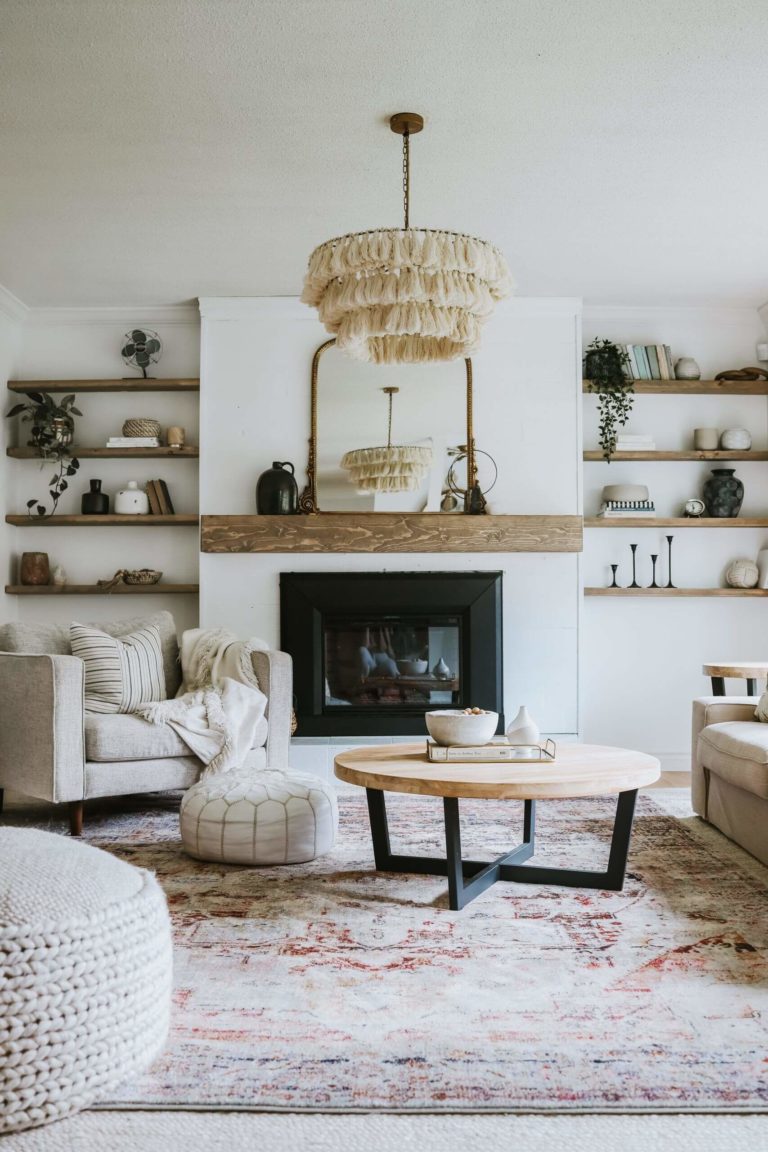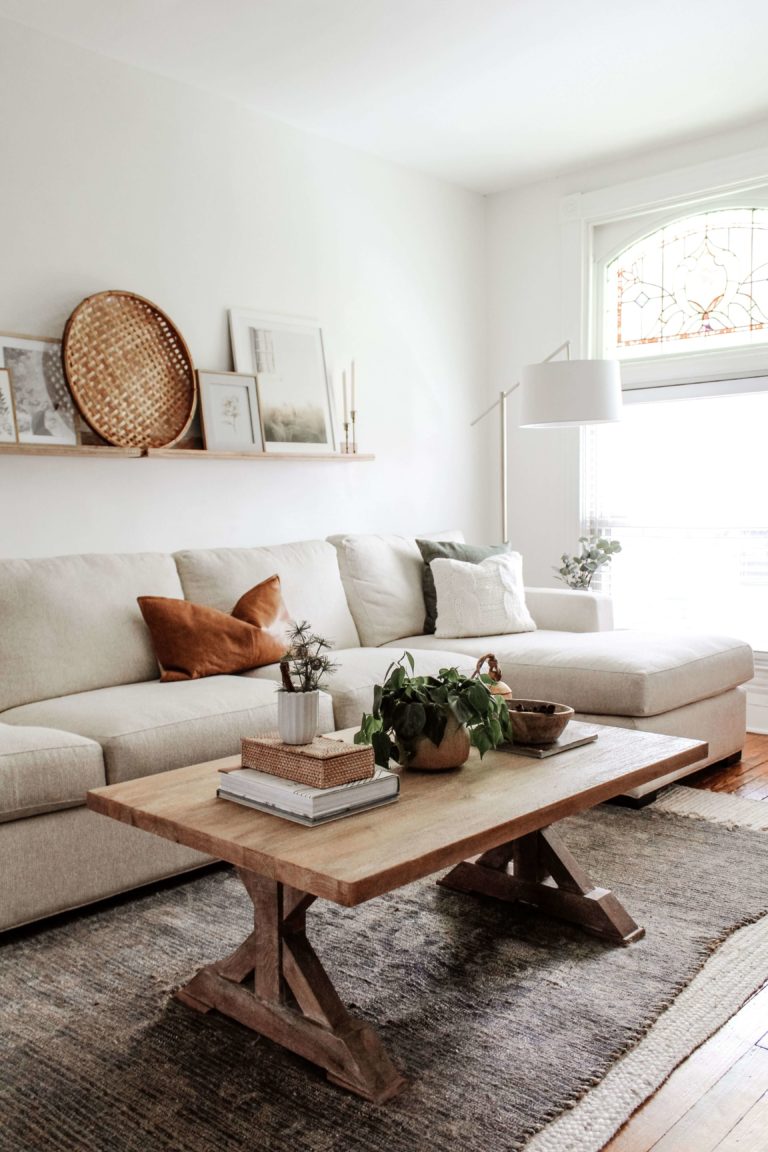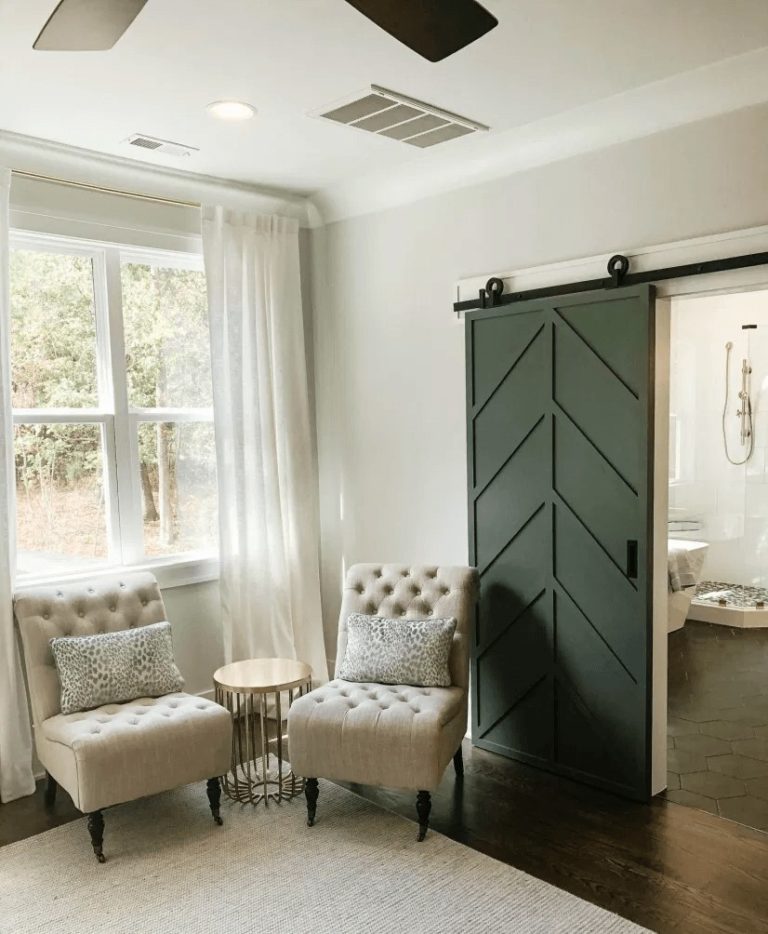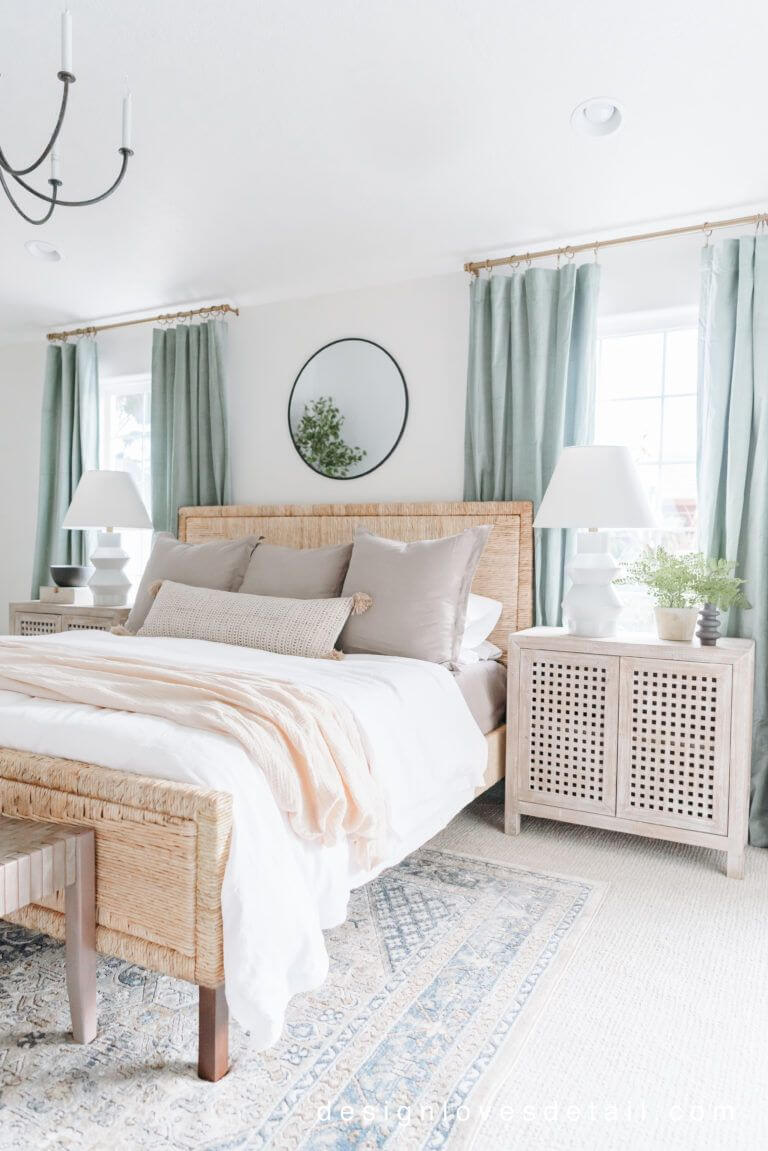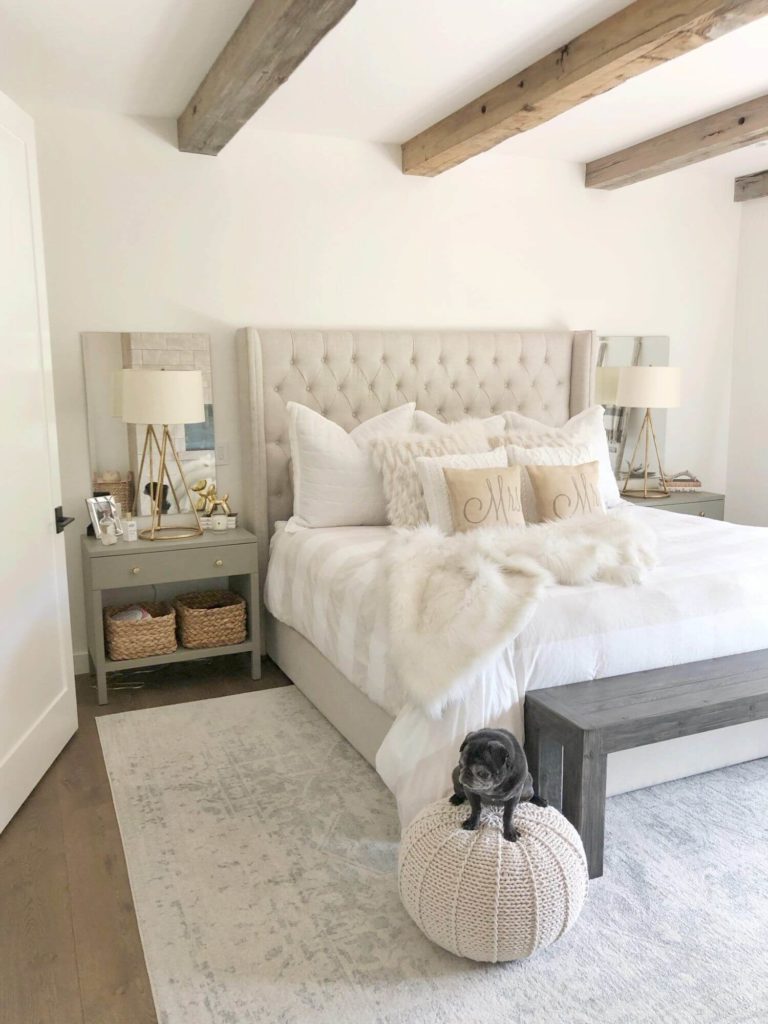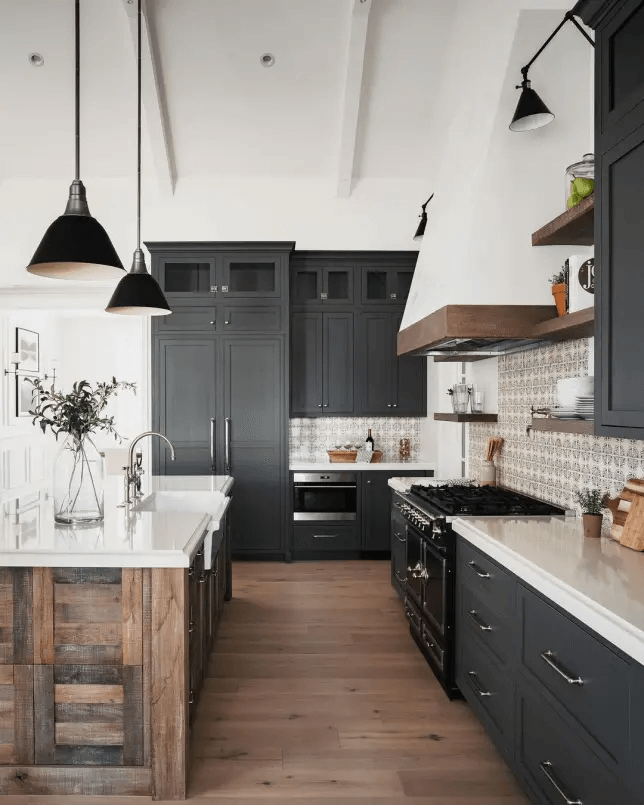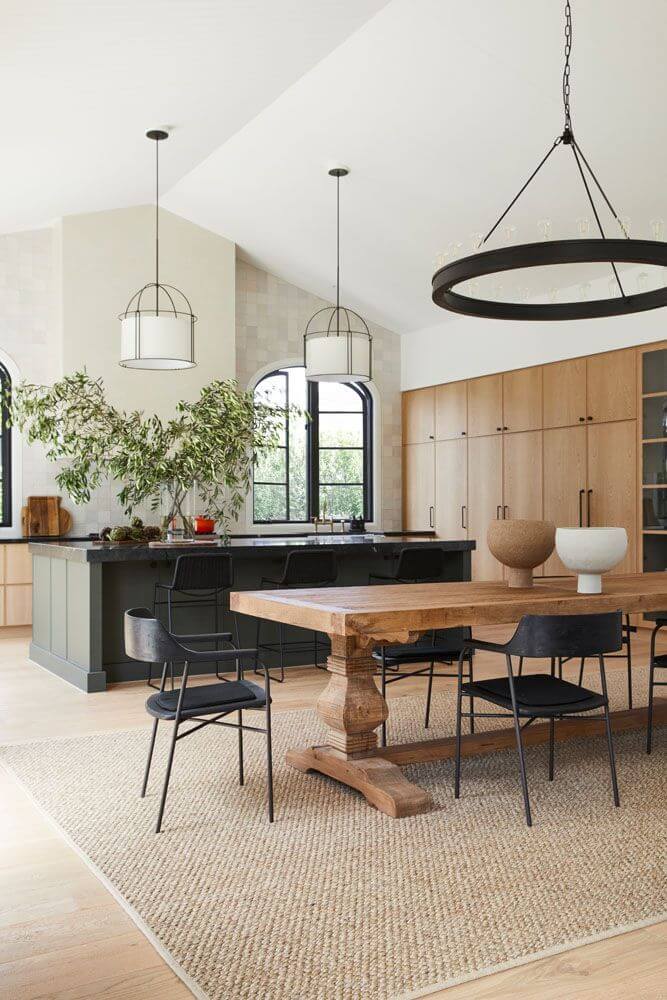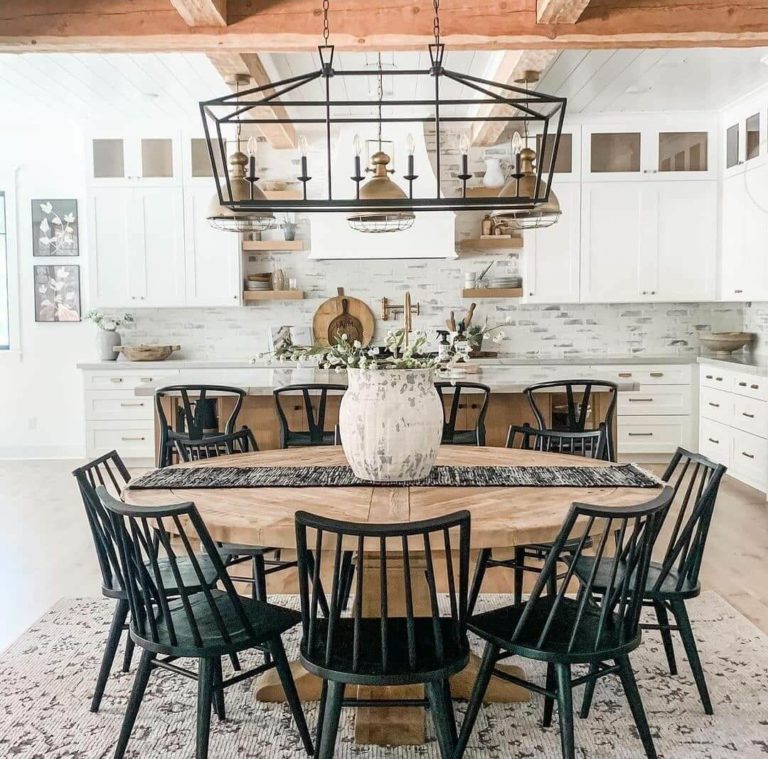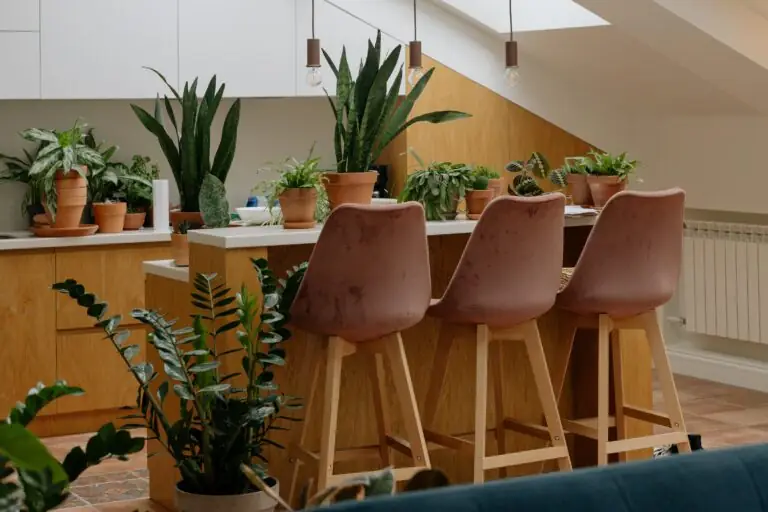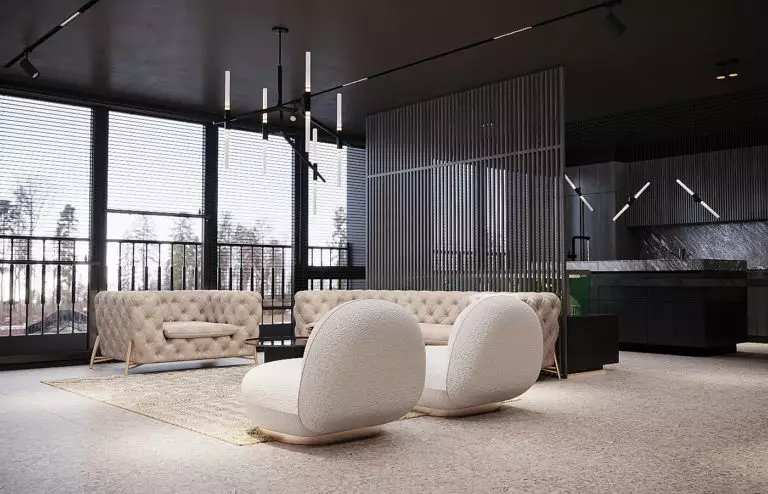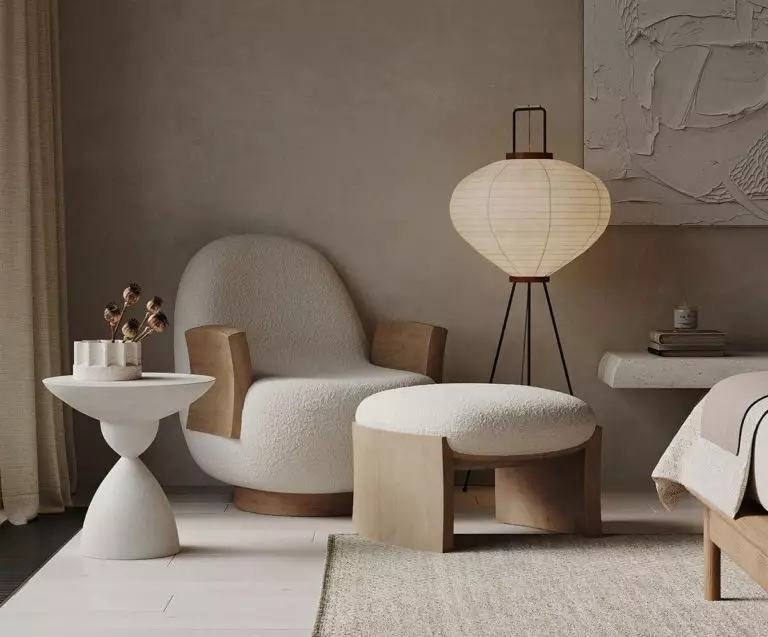Farmhouse style in interior design
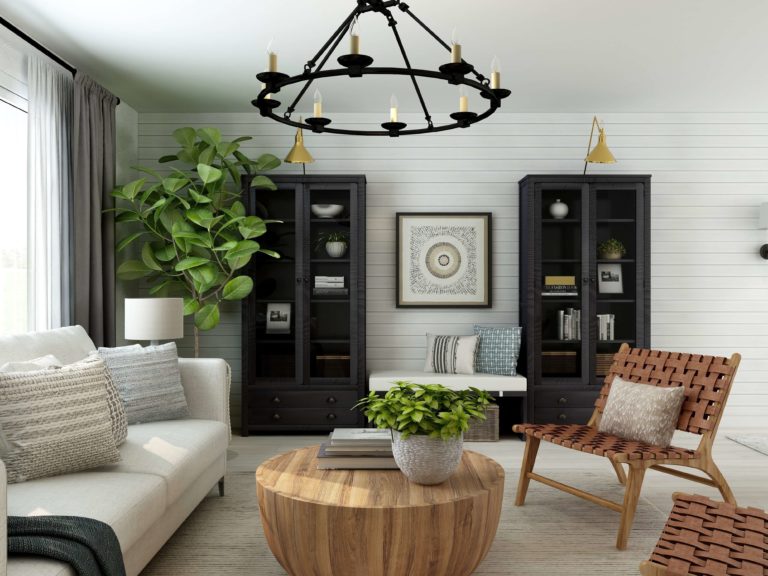
Today, life in the village seems to many of us the ultimate dream. Having acquired a dacha (from Russian – a holiday house), a country house, or a cottage, we are happy to rush there from cities where life is rich and full of events, but, at the same time, from dusty, stuffy, and exhaust-filled streets surrounded by high-rise buildings. Indeed, in such conditions, life or the opportunity to at least be a little out of town and restore strength becomes a heavenly prospect.
If you have your own country corner in the bosom of nature, it’s up to you to arrange it in such a way that you want to return to it again and again and stay in as long as possible. How do you do that? We can hardly be mistaken if we say that the Farmhouse style has all the answers to this question, which we simply have to talk about in more detail – because its popularity is growing day by day.
What is Farmhouse design?
Farmhouse or Country style is a mix of several directions – rustic, vintage, modern, and just a little bit industrial. Experts believe that it originated in the United States in the early 20s of the last century as one of the offshoots of the English version of country music and gradually absorbed the local flavor and traditions, which manifested themselves both by means of decoration and in the features of the furniture and decor.
As American cities developed and concentrated on business and social activity, many left their homes in rural areas and moved to metropolitan regions and smaller cities. However, over the past 2-3 decades, there has been a clear reverse trend: the desire to find peace and tranquility in nature, draw inspiration from it and live in full accordance with the laws and principles of ecology. Out-of-town home sales growth rates have reached impressive proportions, and American interest in the farmhouse has increased again. Gradually, the charm and immediacy of this style, coupled with an abundance of natural materials and simple solutions, attracted attention across the ocean – today, the Farmhouse style has fans all around the world.
Basic principles and key elements
A key feature of the Farmhouse is the relaxed atmosphere. Once in such a house, you no longer want to rush somewhere headlong, decide something, explain and prove something to someone. All you want to do is sit comfortably in an armchair or sofa and pour yourself a cup of herbal tea from a copper kettle on the stove.
At the same time, the atmosphere of complete relaxation does not at all imply randomness or carelessness. The Farmhouse is notable for its integrity and thoughtfulness, and the combination of practicality and not deliberate but unconditional elegance is admired even by sophisticated aesthetes. There is nothing fragile, pampered, overly refined in such interiors – everything speaks of stability, respectability, and confidence about the future. To achieve this effect, durable natural materials, cozy accessories, and a palette that evokes the most pleasant thoughts are used.
Among the main principles of the Farmhouse are:
Colors and prints
The interior of a Farmhouse-style home is a realm of neutral palettes and natural wood tones. Indeed, soft whites, browns, and grays dominate and provide a calm and natural atmosphere. However, today, designers suggest expanding the color palette of the style to make it more stylish, diverse, and cheerful. The list has been enriched with the following “newbies” – navy blue, mint, sage green, matte gold, rich blue, and delicious beige.
As for prints, the Farmhouse has nothing against it, although it manages admirably without it. The drawings are very simple and, one might say, classic – geometric ornaments, naive English roses, and stripes. In some cases, you can find textiles or panels with Indian or Mexican ethnic prints that add authenticity to the interior.
Materials
The design of the interior base in the Farmhouse style is quite simple and involves the use of predominantly natural materials, although, in some cases, certain maneuvers are possible. Let’s talk about this in more detail.
Walls
The key principle of wall decoration for a Farmhouse is – the simpler, the better. They can be whitewashed or painted in a light color, finished with a wooden board or stone. Today, you can see open or carelessly whitewashed brickwork, giving the interior a touch of vintage.
Ceiling
Many trends in design offer a rather utilitarian attitude to ceilings and, therefore, a rather laconic finish. However, it is not the case with Farmhouse. Here, the ceiling decoration becomes a full-fledged element of the interior thanks to massive wooden beams on a bleached surface. These beams can be placed in any way, serving as a point of interest regardless of their place.
Another interesting option is varnishing the ceiling decorated with boards. This solution looks very fresh and, at the same time, organic.
Flooring
When it comes to flooring, everything is simple – wood, wood, only wood. Moreover, there is no need to opt for parquet: only boards are used, which you don’t even need to paint. True, today, designers allow the use of wood-like laminate and porcelain stoneware – but only of high quality, matte, and with a perfectly imitated texture.
Furniture
Previously, designers insisted that an authentic Farmhouse completely denies furniture sets. Sofa and armchairs in the same style were not welcome – as were sets of table and chairs and bedroom sets. However, today they have moved away from such categorical judgments, and the stylistic integrity of the furniture is quite approved, especially if it corresponds to the atmosphere of a rural house.
There are no pitfalls in the selection of furnishings for a Farmhouse: everything is quite obvious and predictable. Massive tables, cabinets, and kitchen sets made of natural wood, often of rough workmanship, simple soft sofas with rounded backs and armrests, sideboards, and chests of drawers – this environment combines practicality, modesty, discreet beauty, and unconditional aesthetics of the past. One can often find furniture with elements of wrought iron, the famous Tolix metal chairs and bar stools, wicker chests, and rocking chairs.
Lighting
Farmhouse lighting scenarios are eclectic. So, in the design of one house in different rooms, you can find the following types of lamps:
Oddly enough, this mix looks quite organic and emphasizes the laid-back and democratic nature of the Farmhouse. So this may be good news for you: you have practically no restrictions in choosing fixtures. At the same time, do not forget: the lighting in such a house should never be too bright. It is the soft and subdued light that provides comfort and relaxation.
Textiles
A characteristic feature of the farmhouse is the abundance of textiles – however, without excessive piling up and pretentiousness. Patchwork bedspreads, coarse burlap upholstery, linen, and cotton form the basis for interior textiles. On the floor, as a rule, there is a carpet of a natural shade made of low-pile wool, sisal, or jute, soft blankets, and fluffy pillows lie comfortably on the sofas. Animal skins are also often present.
It is worth saying a few words about the window treatment. It is surprisingly laconic, connected with the desire of the owners of farmhouses to let in as much light as possible. As a rule, they are content with thick curtains made of light-colored fabric falling in straight folds, while tulle is not an option.
Decor
Unlike Provence, Vintage, and Shabby Chic, the Farmhouse is by no means pleased with a wide range of decor units. In this respect, it is much closer to a more severe rustic style. However, this does not mean diluted minimalism either but rather a more rational approach.
Wooden signs, wicker and wire baskets, mirrors on belts or in wooden frames (although they should perform a more practical than decorative function), as well as bowls made of wood and ceramics, become traditional decoration elements for rural interiors. In a Modern Farmhouse, candles in metal or iron candlesticks are not uncommon. What it really lacks are paintings and posters. Preference is given to textile and ceramic wall panels. Well, as for fresh flowers and compositions from dried flowers, everything is obvious here: the more of them, the better for you and the interior.
Farmhouse in various rooms
Farmhouse implies a single design approach as a whole – except, perhaps, for the nursery, although some of its ideas can be used there as well. Let’s discover the characteristic features of the style by referring to particular rooms.
Living room
Farmhouse-style living rooms are so diverse that you can talk endlessly about their features, furnishing, and decor options. Their decor is quite traditional and necessarily includes a fireplace, not far from which there is a seating area consisting of a sofa and armchairs, combined with a beautiful wooden table and a cozy carpet.
In addition, in Farmhouse living rooms, you can often see open display cases with books, several table lamps at once, creating soft lighting and the right mood, and a couple of cozy poufs or banquettes. The TV, as a rule, unobtrusively integrates into the interior, located under the ceiling or above the fireplace.
Bedroom
Nothing should distract from relaxation – this principle has been preserved since the days when farmers worked hard from early morning until late evening and had to properly restore their strength in a short period of time. Farmhouse-style bedrooms are surprisingly laconic: as a rule, their furnishings consist of a wide comfortable bed with wrought-iron headboards, a high wooden headboard or with charming old-fashioned posts, and a bedside table (mostly only one), which is often replaced by a table. A banquette or a wicker chest is placed at the foot, monochromatic light curtains are hung on the windows, sconces, and a mandatory chandelier is responsible for lighting.
A “clean” Farmhouse provides for ascetic decoration of the bedroom, although today this rule is treated rather scornfully, placing favorite flowers and trinkets on the nightstand in the room for more comfort.
Dining room and kitchen
Previously, the country house kitchens were the center of the whole family’s life. Here they not only cooked but also made supplies, admired the harvest, warmed themselves on winter evenings, had breakfast in the dark, and enjoyed dinner after a fruitful working day. Today, they have retained their atmosphere, although they could not do without modern solutions.
Characteristic elements of a Farmhouse kitchen are wooden beams on a whitewashed ceiling, many open shelves, massive wooden sideboards, kitchen worktops and cabinets, drawers, and baskets for storing vegetables, fruit, and aromatic herbs. A kitchen island can act as a dining table, and if there is room for arranging a full-fledged dining room, a massive model with iron details, accompanied by chairs or even benches.
Bathroom
It is absolutely impossible to apply the word “bathroom” to a Farmhouse-style bathroom – it is so cozy and warm there, even visually. This effect can be achieved by using plain white ceramic tiles, grooved boards, or simply painted walls in combination with a similar floor. Classic white fixtures, recessed sinks with open siphons in a retro style, wrought iron chandeliers with pendants, and mirrors in beautiful wooden frames also contribute to the atmosphere. It is also worth giving up on wall hooks for clothes and towels, replacing them with wicker baskets. It would also be perfect if there were a place for green plants.
Modern Farmhouse
A “clean” farmhouse is exclusively about natural materials, the absence of any technology, and a combination of natural serenity and the inviolability of a family hearth. However, life cannot but make its own adjustments even to such stable solutions, and it is not surprising that the Farmhouse has changed somewhat today.
So, designers note the following “innovations” in the design of both authentic farmhouses in America and cottages outside of it:
Farmhouse style: is it trendy now?
We can speak with full confidence about the dominance of the Farmhouse in the interior of country houses and cottages around the world. Due to the fact that this style is quite friendly and gladly accepts modern solutions and trends, it is quite easy to adapt it to modern realities and at the same time preserve its originality through the competent selection of furniture, decor, and finishing materials.
Why should you try this style?
There are various design options for a country house or cottage – from harsh rustic to rich and flirty Shabby Chic. However, the Farmhouse seems to be the golden mean for all these styles, offering the restraint and naturalness of the most ascetic of them, as well as the comfort and charm of the lightest, pleasing with a variety of textiles and beautiful details.
The Farmhouse is quite flexible and is able to adapt to the tastes and habits of the owners, becoming either simpler or more elegant, and not without some refinement.
Who is Farmhouse suitable for?
You should consider Farmhouse in the following cases:
Farmhouse style in different countries
As we said above, most designers refer to the Farmhouse as an American variety of country styles. It is not surprising that, in different countries, it has its own interpretation and characteristic elements, which are worth considering in more detail.
Great Britain
It is quite logical that classic English country is still reigning here, which is characterized by a huge amount of textiles with prints in the form of flowers, as well as stripes, combined with moderately elegant dark wood furniture. The palette is dominated by reds, greens, browns, and beiges, while furniture and décor arrangements are often impeccably symmetrical.
France
The style of French country houses is often called French country or Provence. This direction is one of the most popular offshoots of the style and is very popular even outside its own country.
As in other variations, there is a lot of wood here, although the French no less often use limestone in decoration. The furniture is distinguished by amazing elegance replicated by whimsical lines and smooth curves. Preference is given to light and pastel colors and fanciful chandeliers in the form of whimsical forged candelabra. Prints on textiles and decor from willow vines, black metal, and delicate porcelain create an amazing atmosphere of sophistication and simplicity.
Switzerland
Here the countryside is presented in its Scandinavian version called chalets, sometimes called rustic. The chalet is very close to the rural life and cultural traditions of the region and implies the appreciation of the rough charm of only slightly processed and unpainted decor in combination with stone and a cozy atmosphere created by large soft sofas with soft upholstery, wrought iron chairs and lamps, and laconic low-key decor elements of transparent glass and white ceramics.
Germany
German country houses have whitewashed and half-timbered exterior walls and a lot of wood indoors. The interiors are characterized by huge open spaces, plank floors, supporting and ceiling beams, massive furniture with smooth lines and a calm silhouette. The palette is quite dark, dominated by browns and wood shades with the addition of beige, black, and light yellow. There is very little decor – as a rule, these are animal figurines, beautiful table lamps, and floor vases.
Italy
Many refer to the Italian country style as the Mediterranean style, although the designers insist that it is more of a Tuscan style – using light yellow stone, numerous arched openings, and a soft sunny palette. Wood is represented here only in dark doors and frames, ceiling beams, and massive carved furniture. Sofas and armchairs are covered with light-colored fabric with an unobtrusive pattern, and bizarrely shaped metal chandeliers most often become the highlight of the interior.
The Farmhouse style is a story about simplicity and ease combined with elegance, harmony, and special aesthetics. A house decorated in this way always looks welcoming, warm, and cozy, even if the weather is raging outside. This warm and natural atmosphere becomes for many more valuable than the most luxurious interiors.
